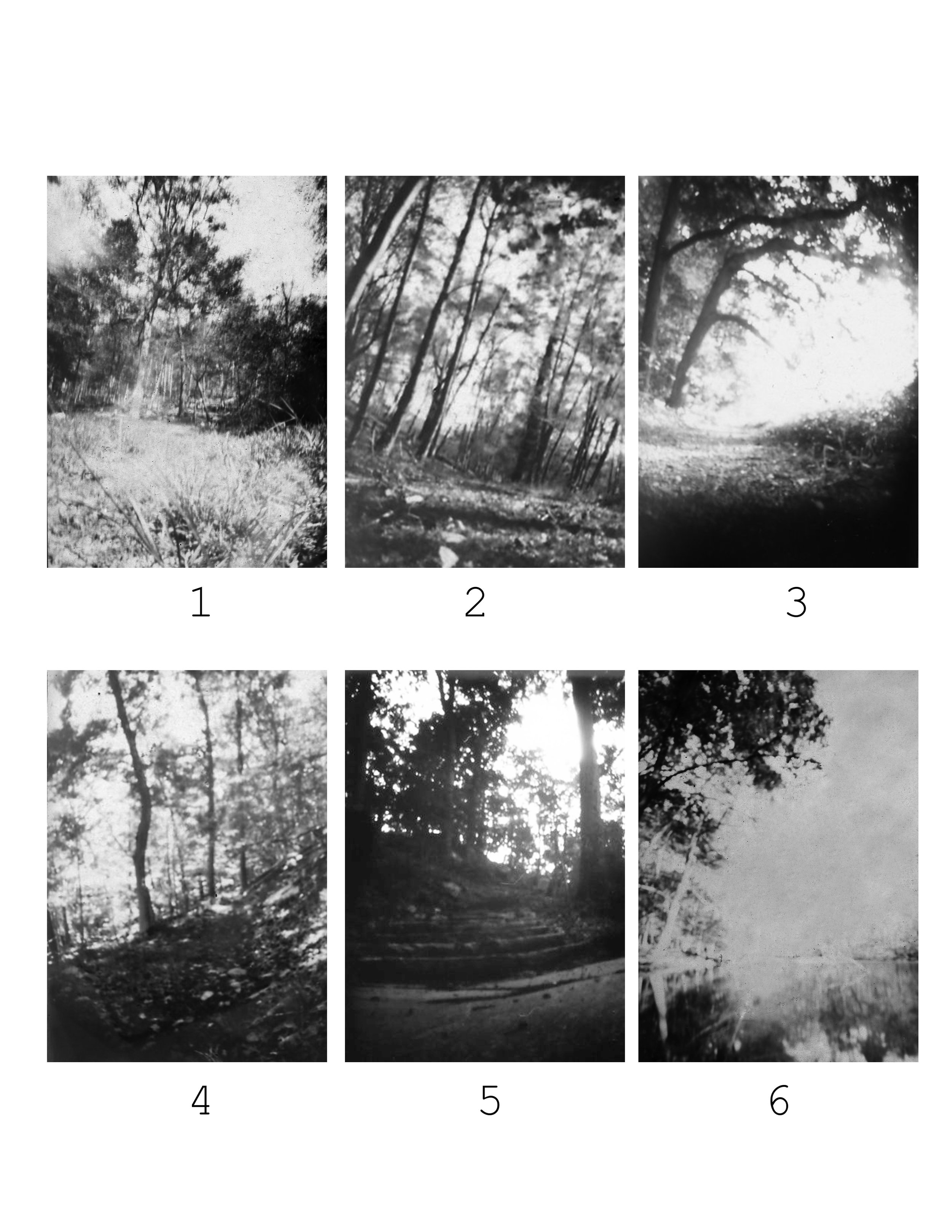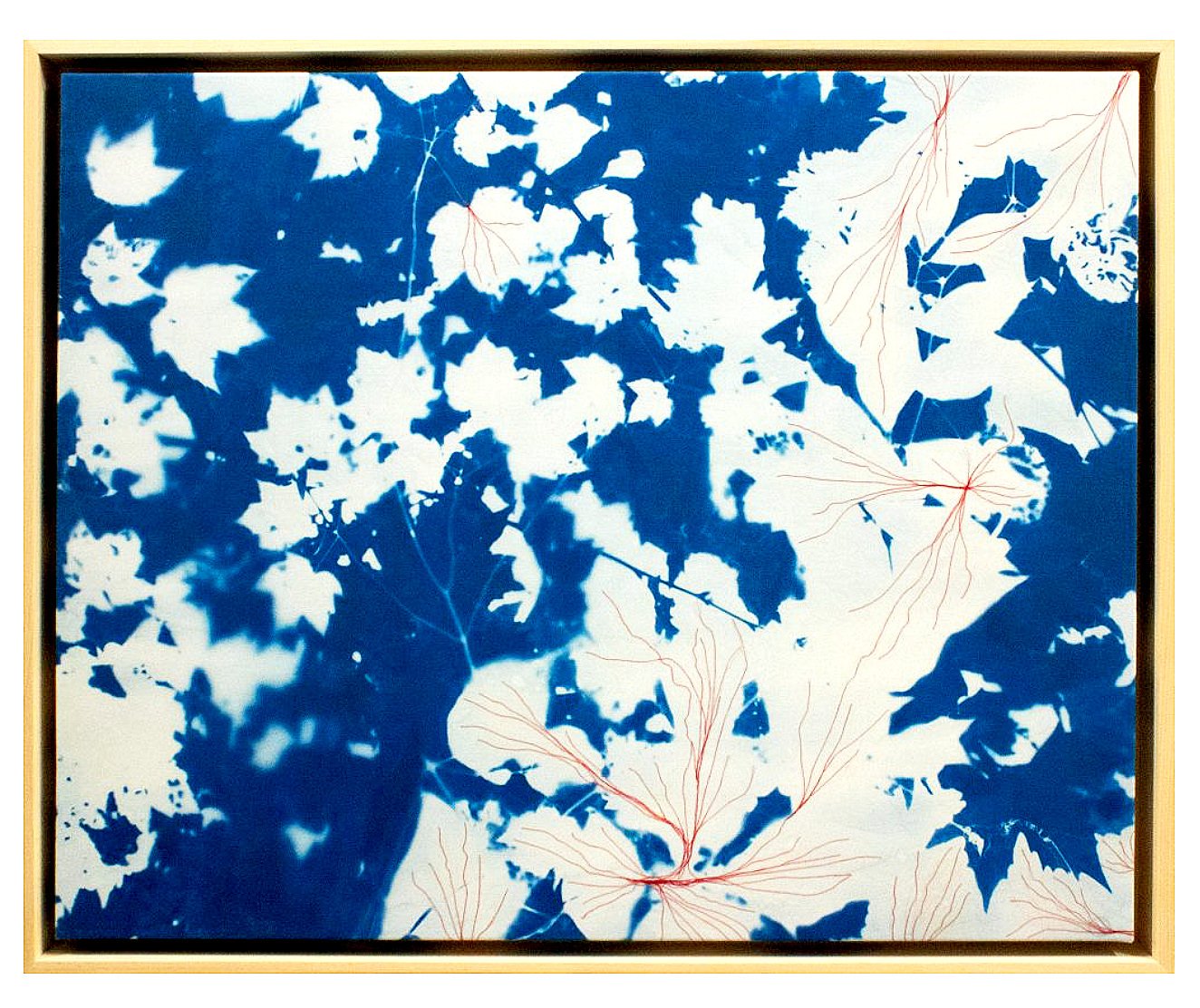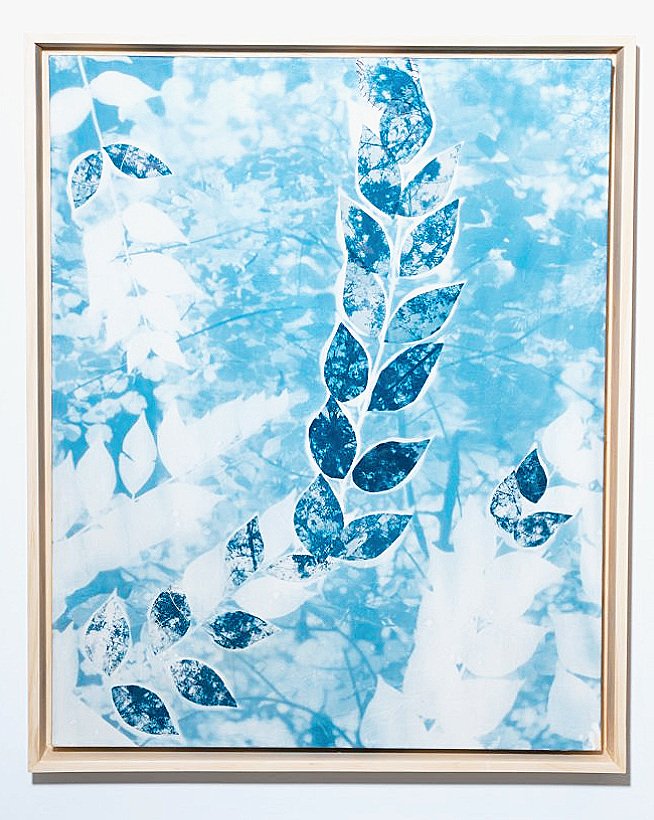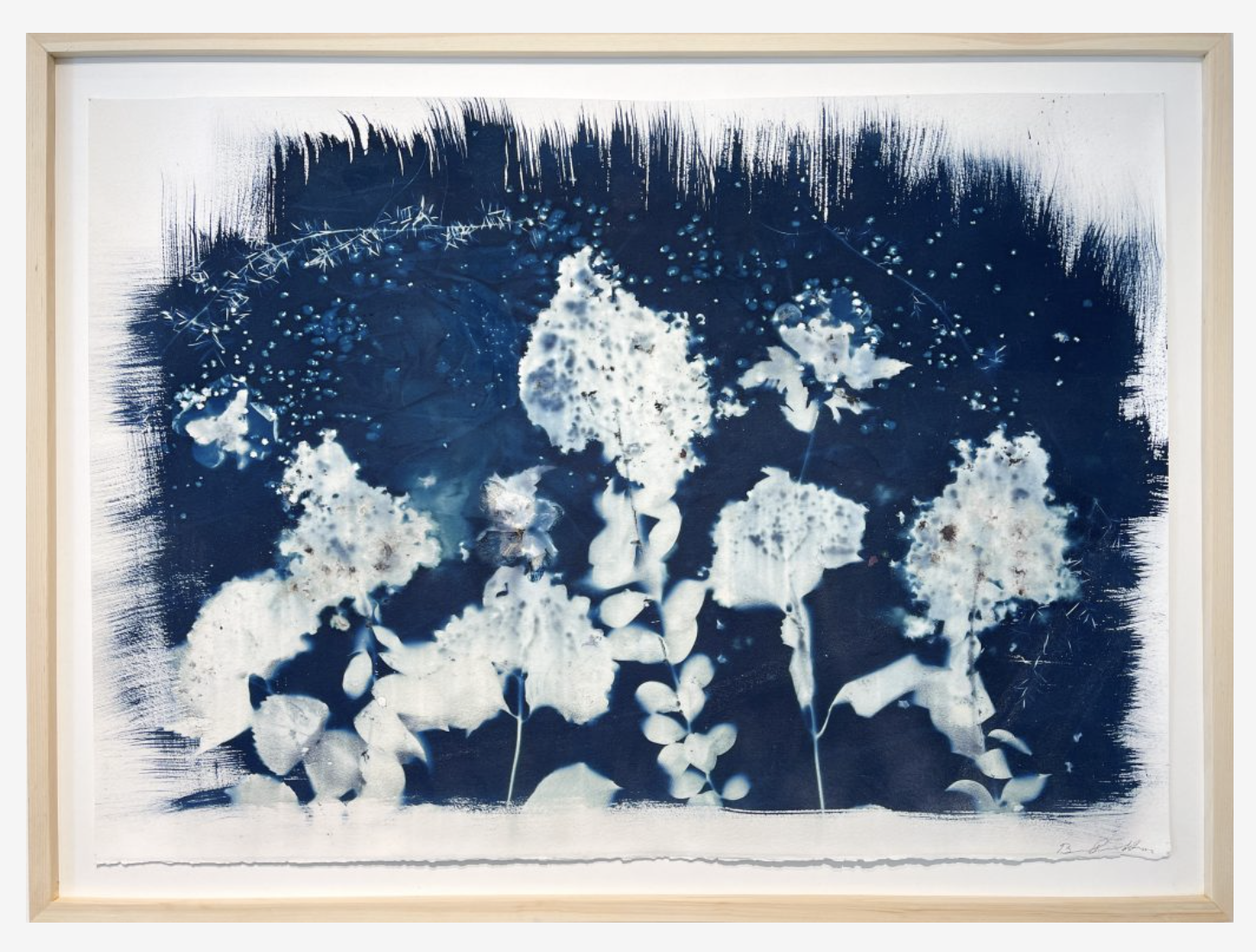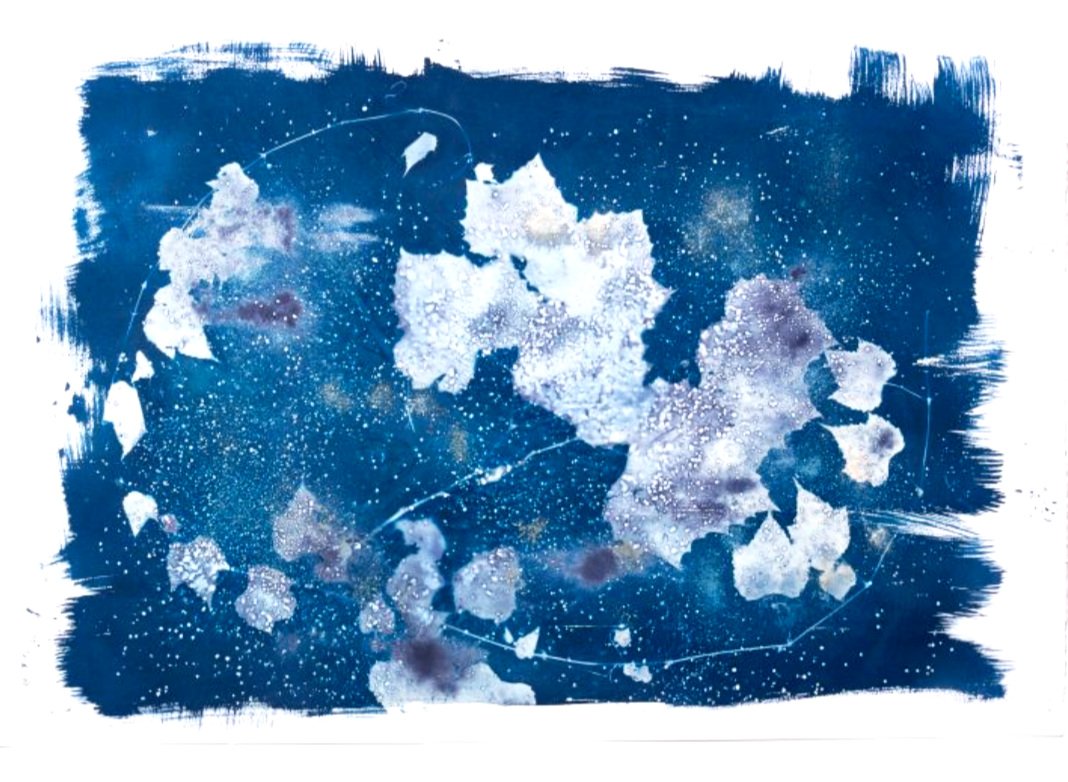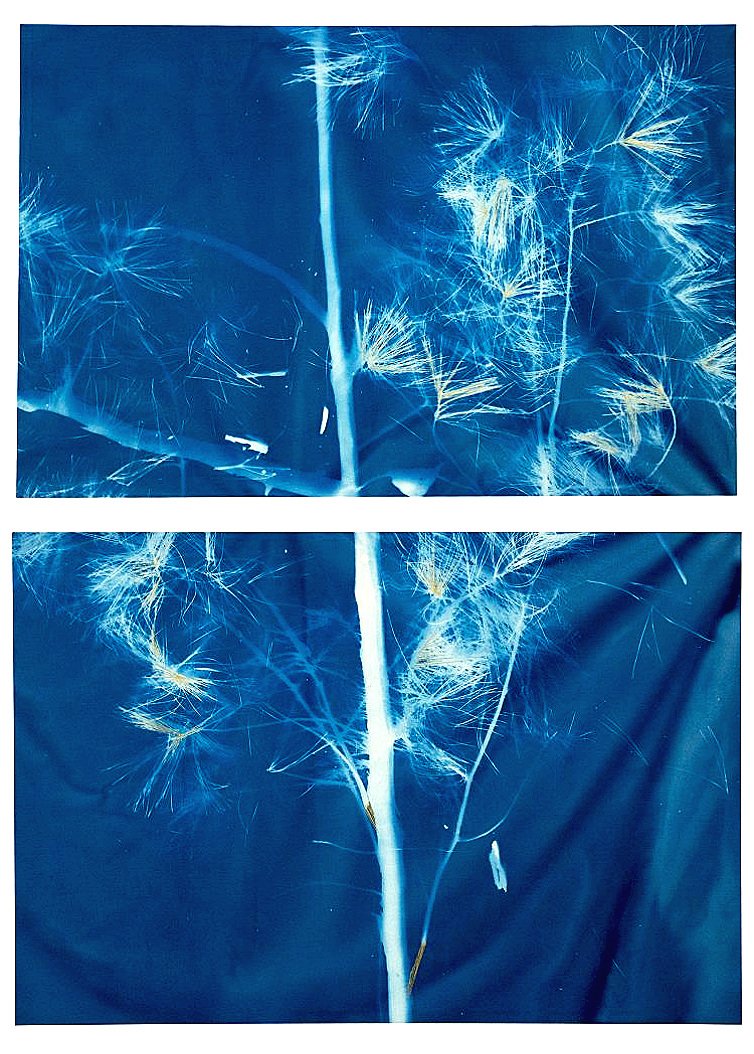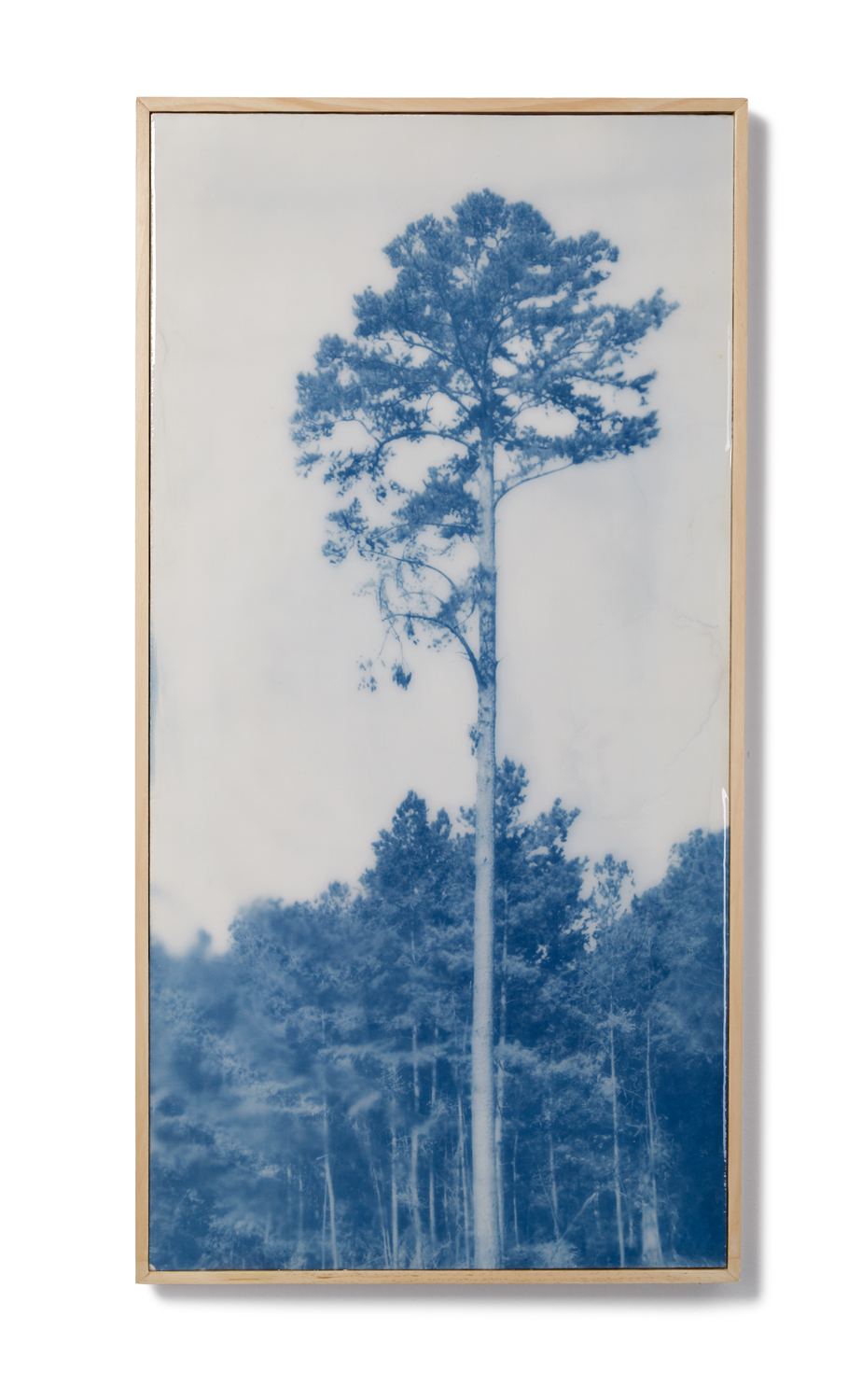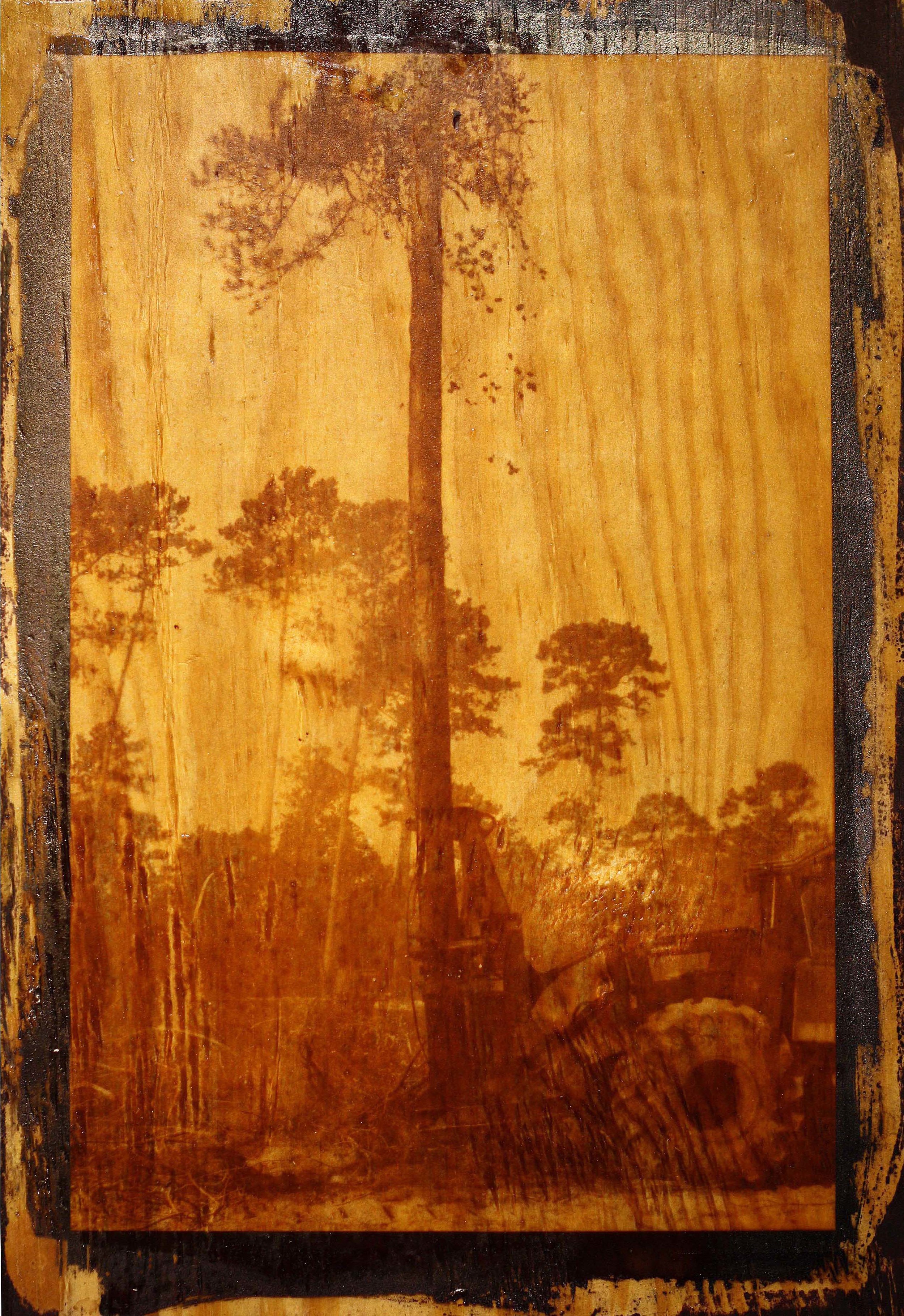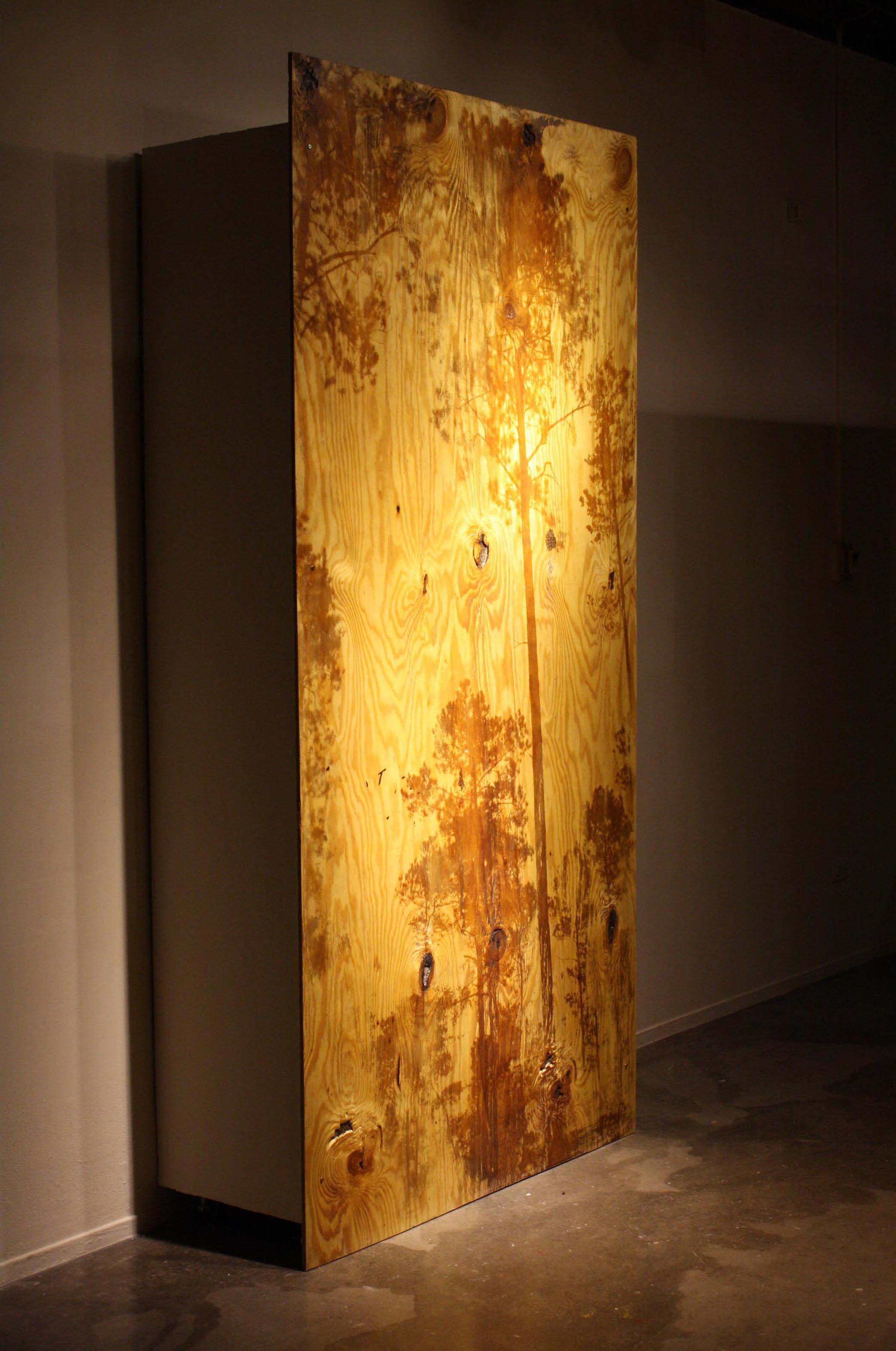Time, Space and Change
Brenda Perry Herrera's latest exhibition showcases a compelling body of work created during a period of isolation prompted by both COVID 19 quarantine measures and the birth of her second child. Demonstrating her ongoing experimentation with traditional photography techniques, the featured pieces include mixed-media cyanotypes on paper and peep boxes with pinhole camera images.
A passionate advocate for environmental issues, Perry Herrera's artwork delves into the uncertainties of climate change and the resulting biological transformations in humanity and the world. The cyanotypes on paper, characterized by intricate textures and tones reminiscent of molecular photography, serve as a visual exploration of nature's overlooked nourishment. The incorporation of beeswax acts as a "preserving agent," symbolizing the unpredictable unraveling of the world.
Notably, Perry Herrera's brush strokes disrupt the perceived mechanical nature of traditional photography techniques. This deliberate fusion of the artist's hand and the photographic medium implies a dual intervention of machinery and nature, introducing an artisanal element to the process. The artist's partial control over the chemical process introduces an element of chance, becoming an active factor in the creation of this body of work.
Metaphorically, Perry Herrera's cyanotypes address the overwhelming impact of human presence on the environment in contemporary times. However, the nostalgic undertones of her work harken back to 19th-century methods, requiring a slower pace and the sun's intervention for production. Perry Herrera invites viewers to reflect on the evolving relationship between humanity, nature, and the passage of time.


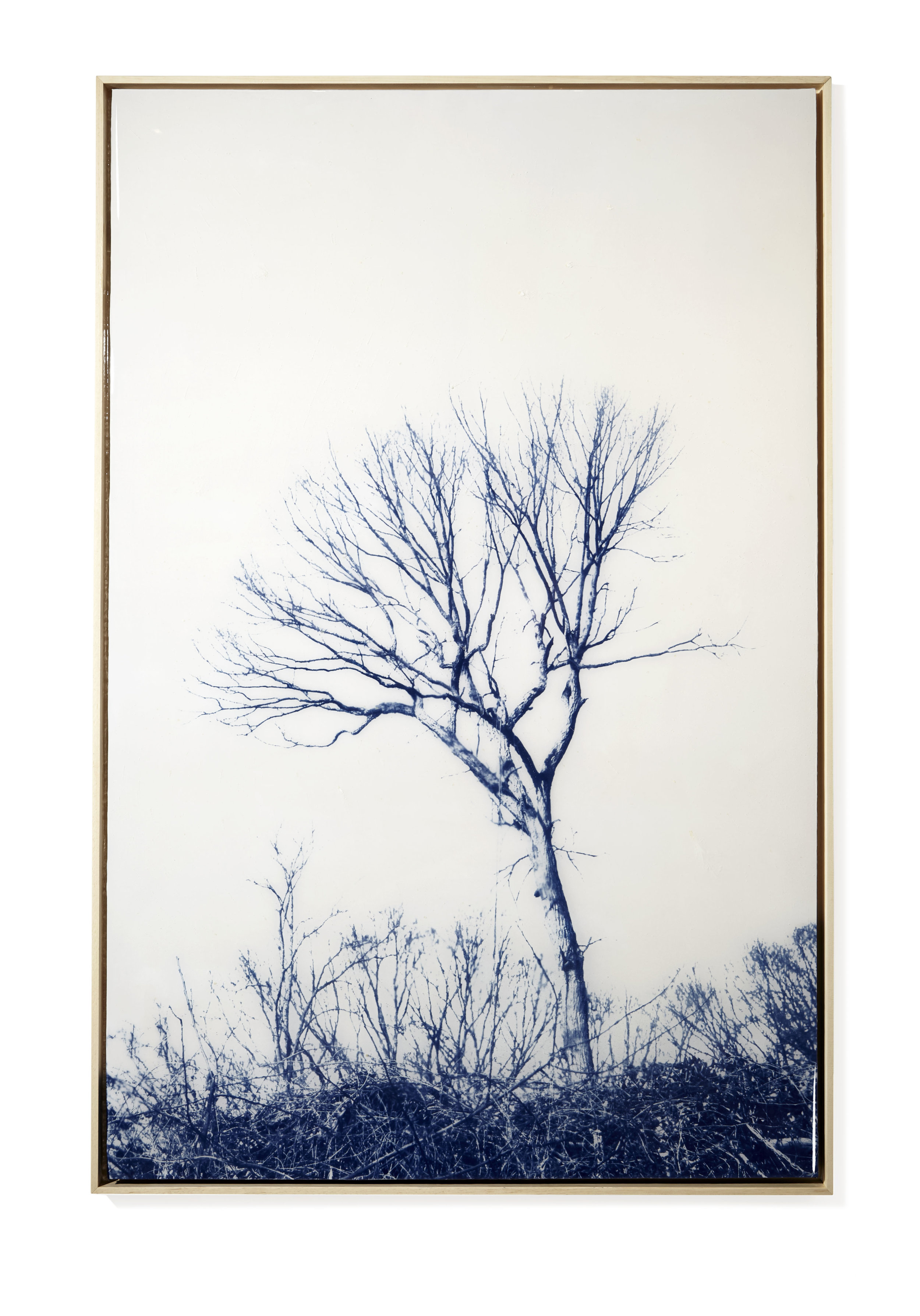
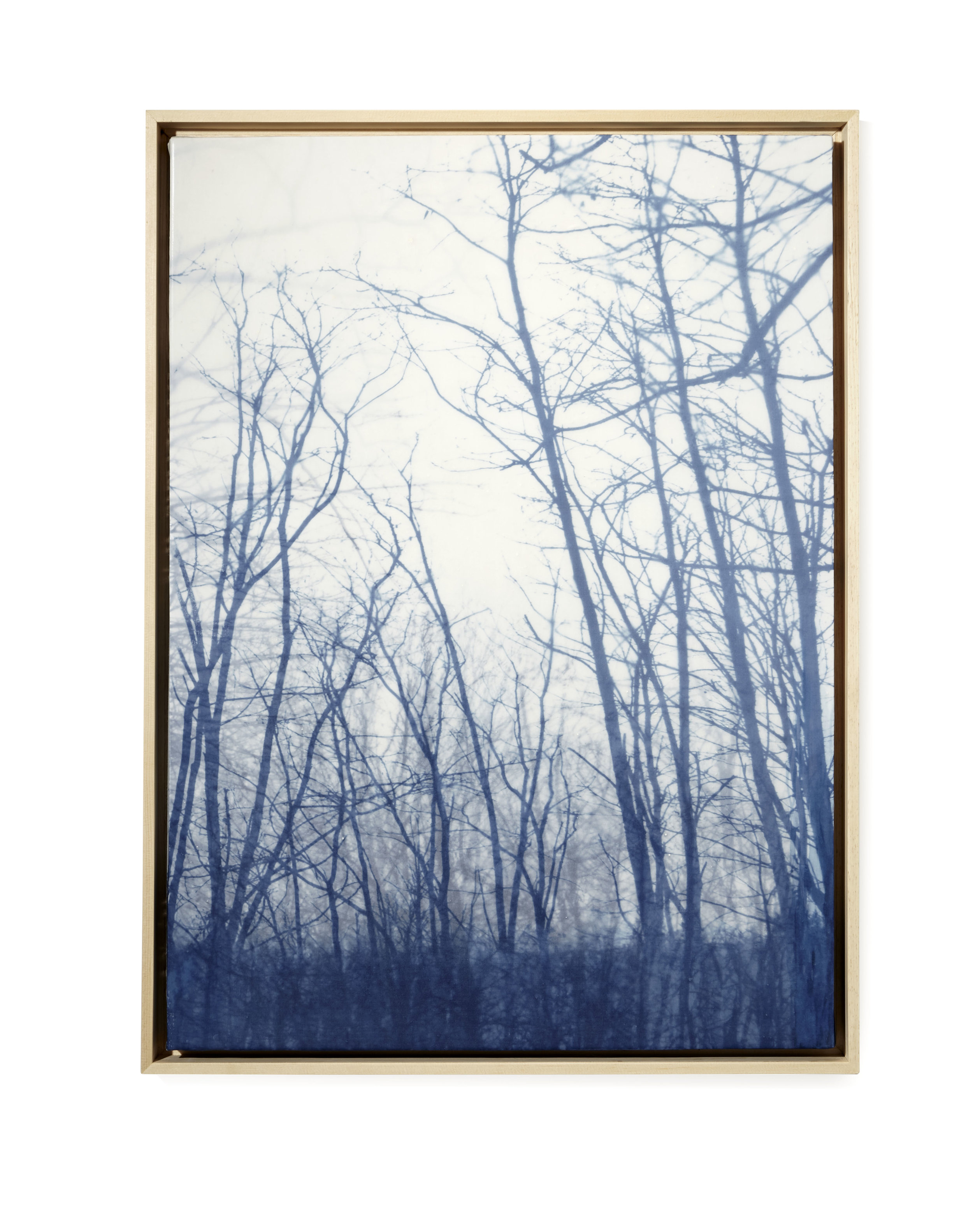
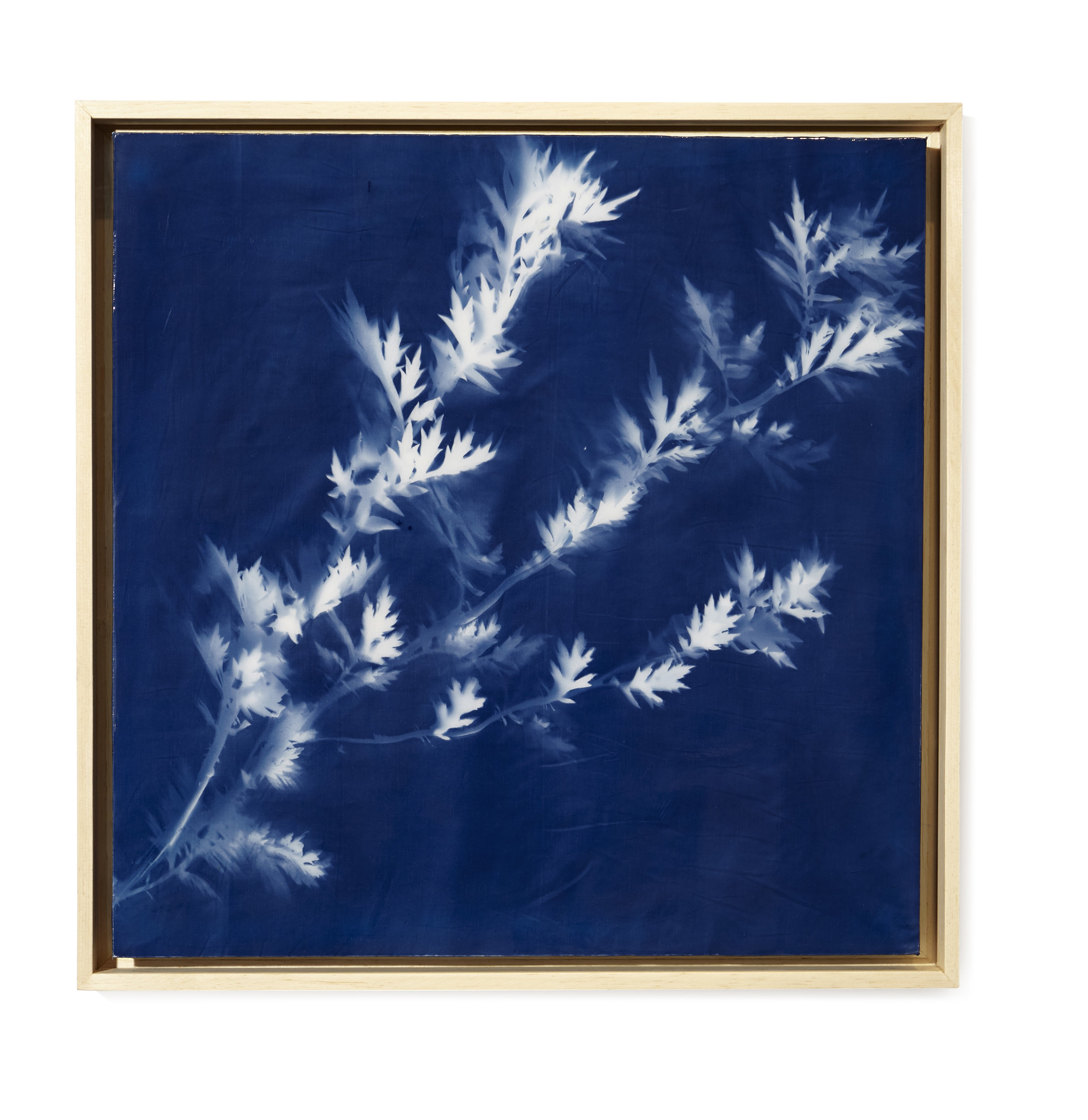
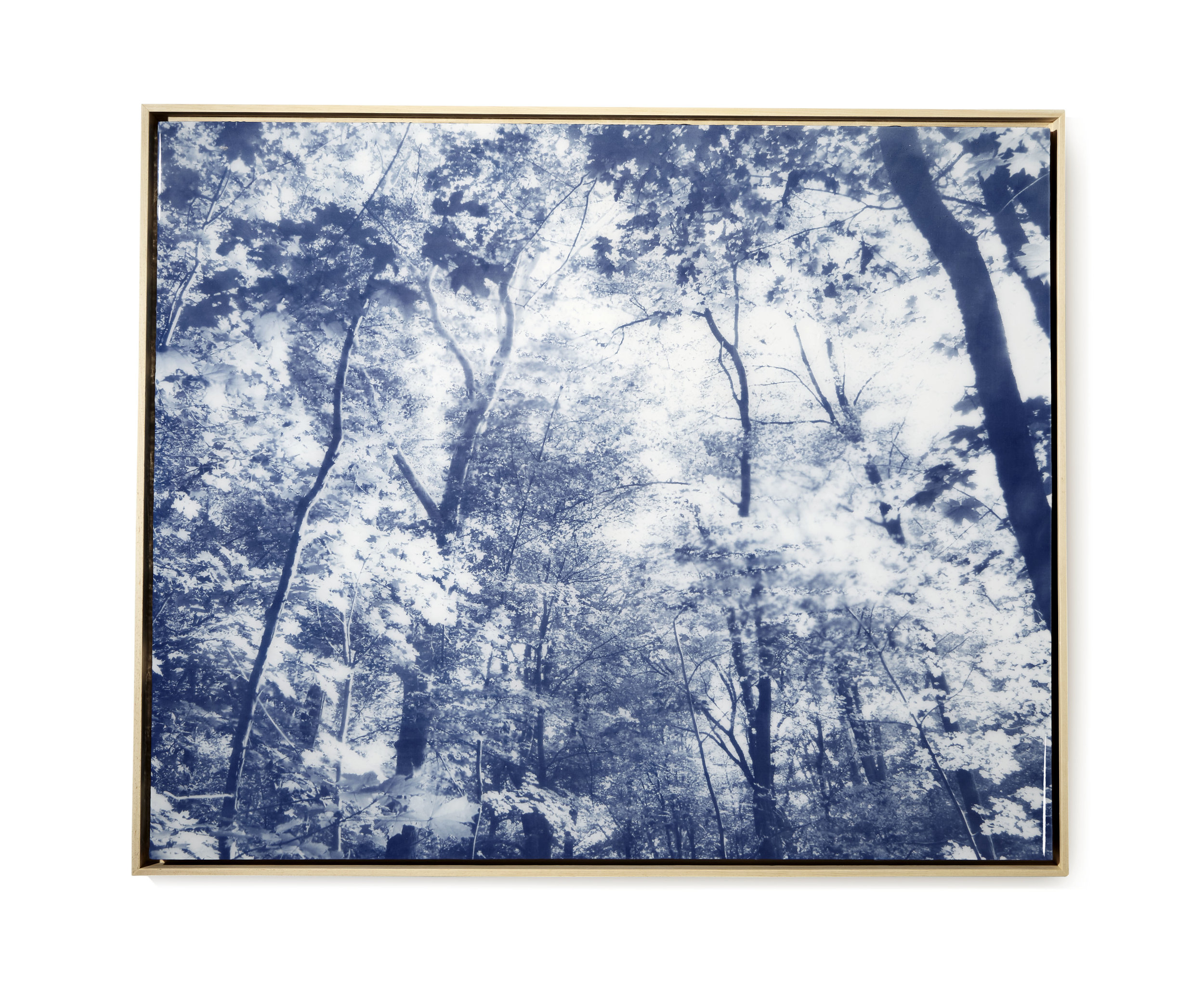
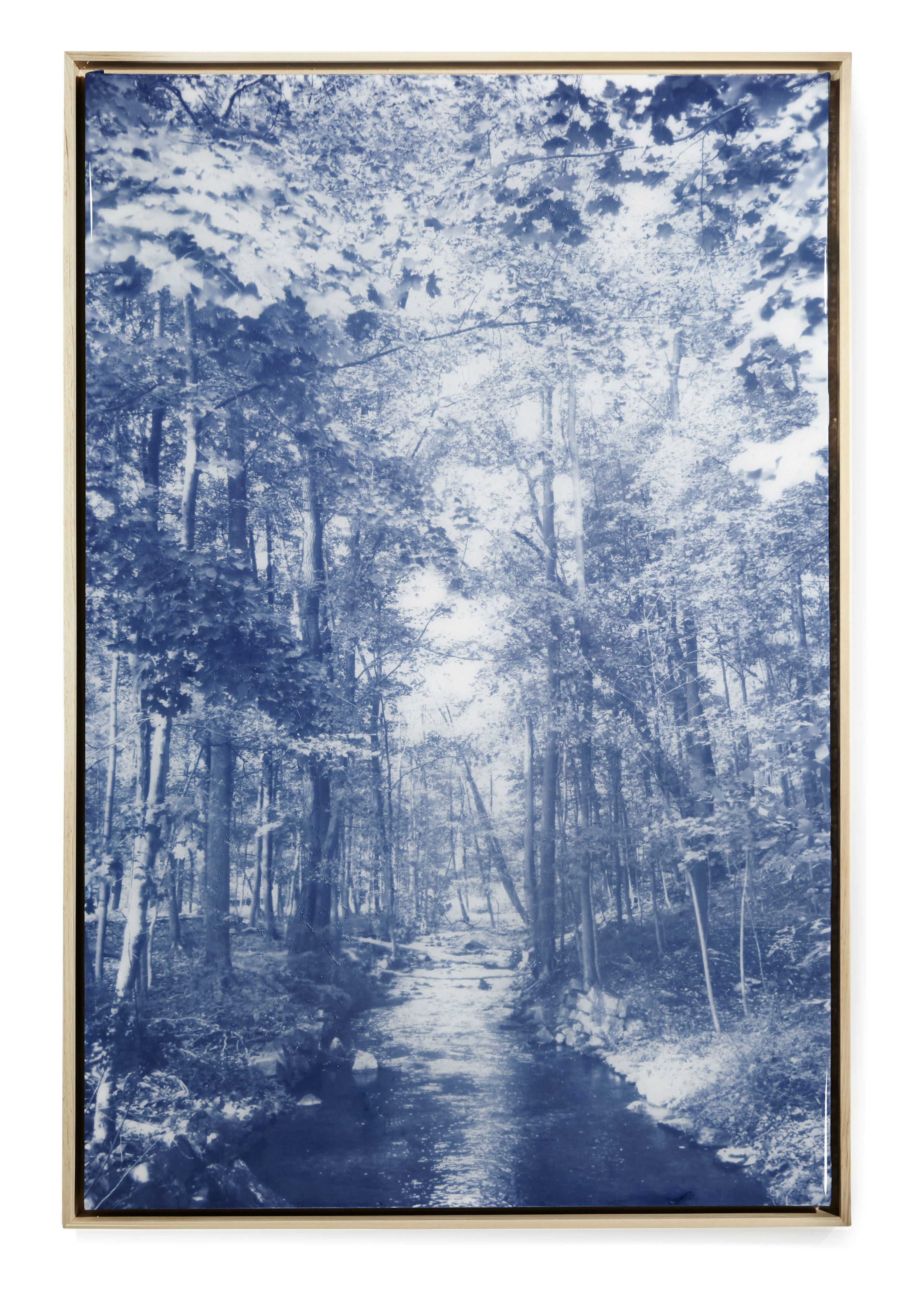
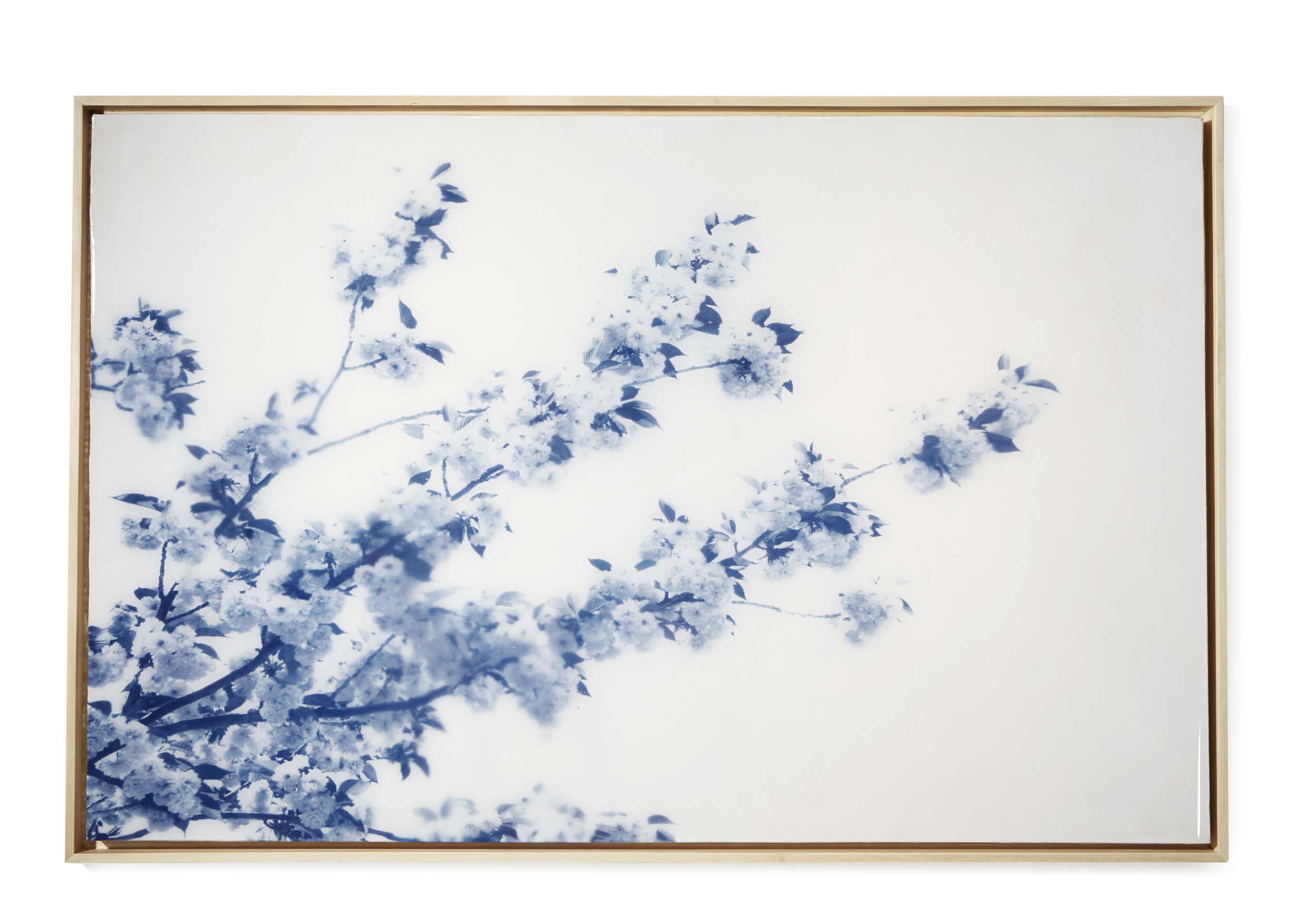
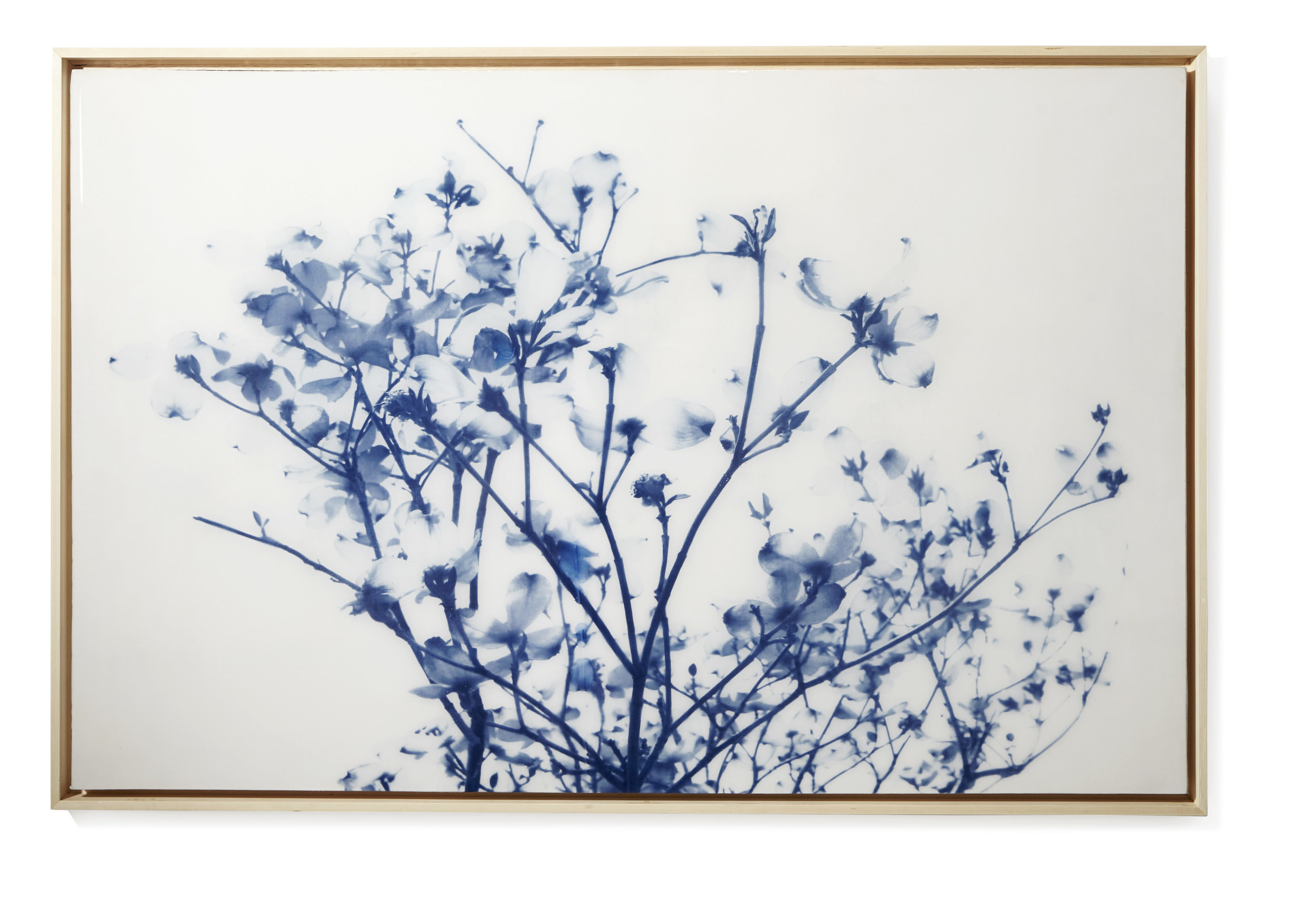
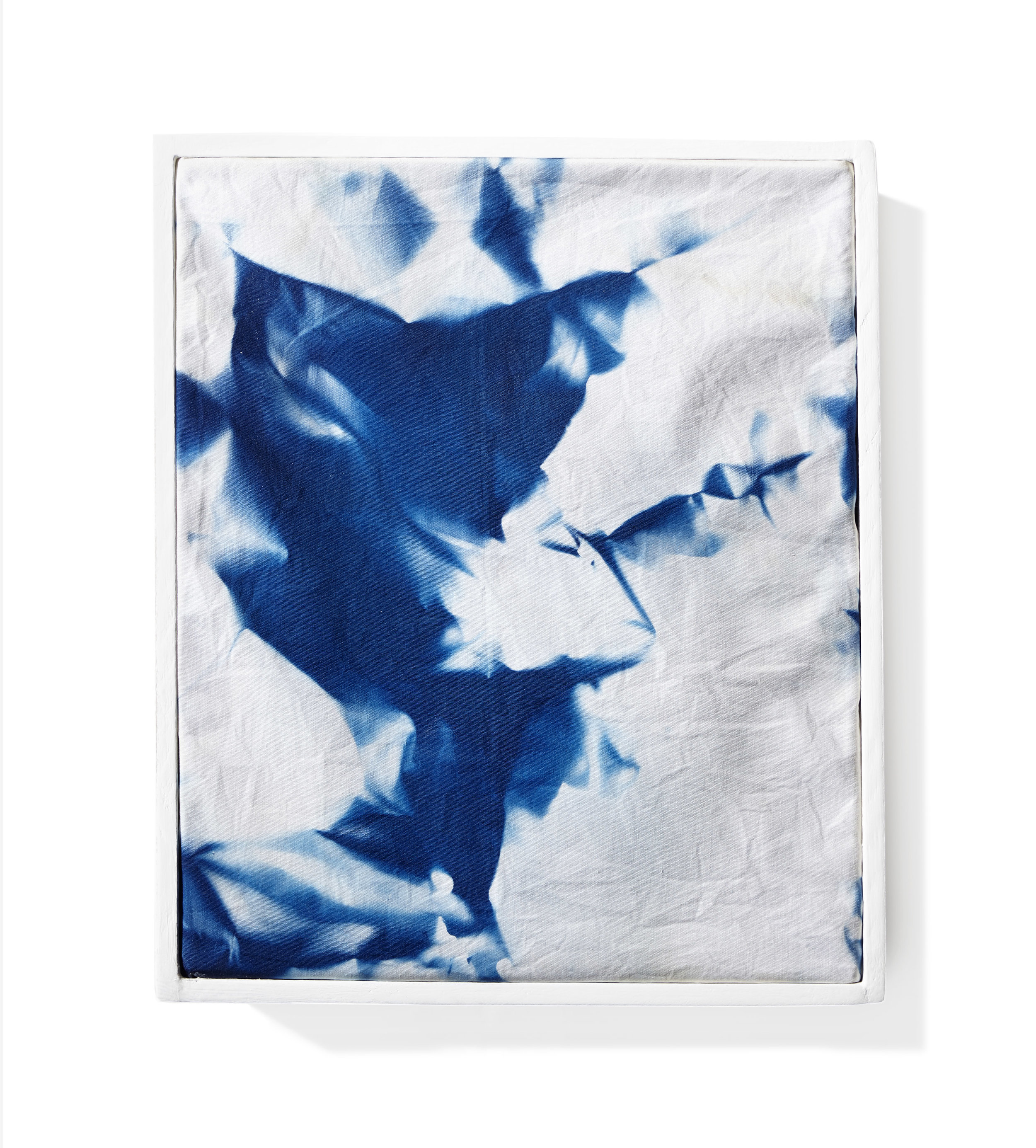
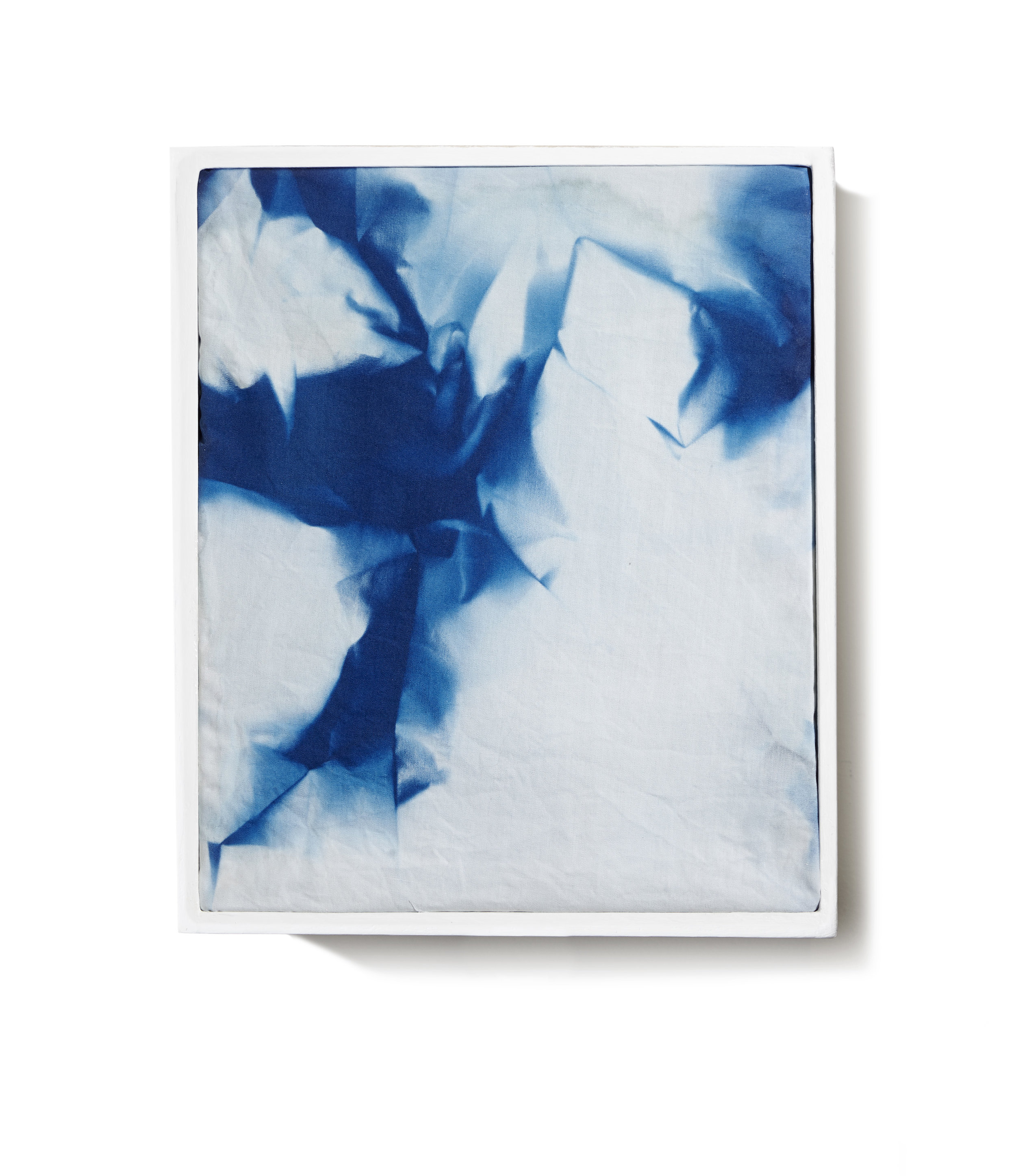
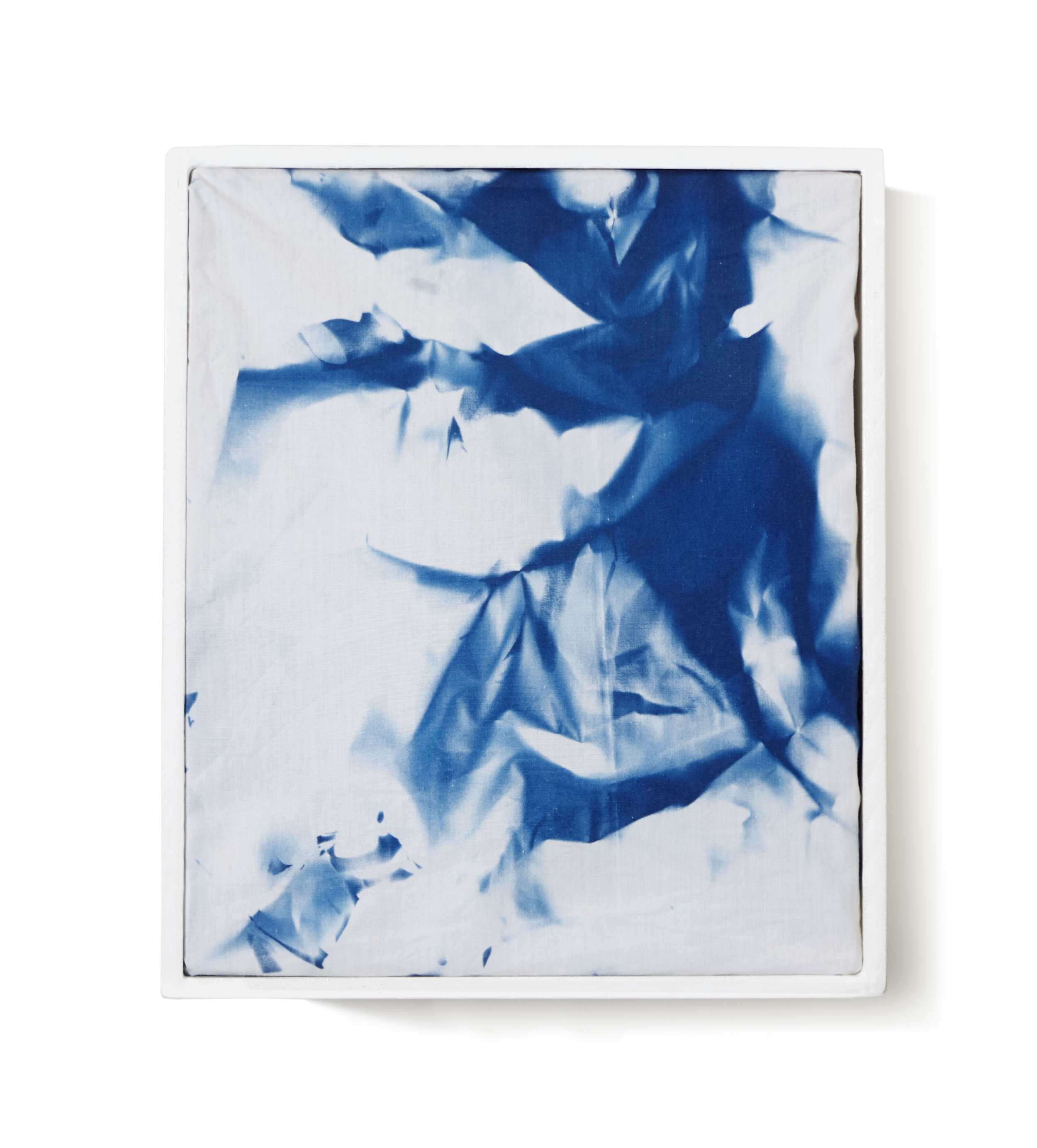
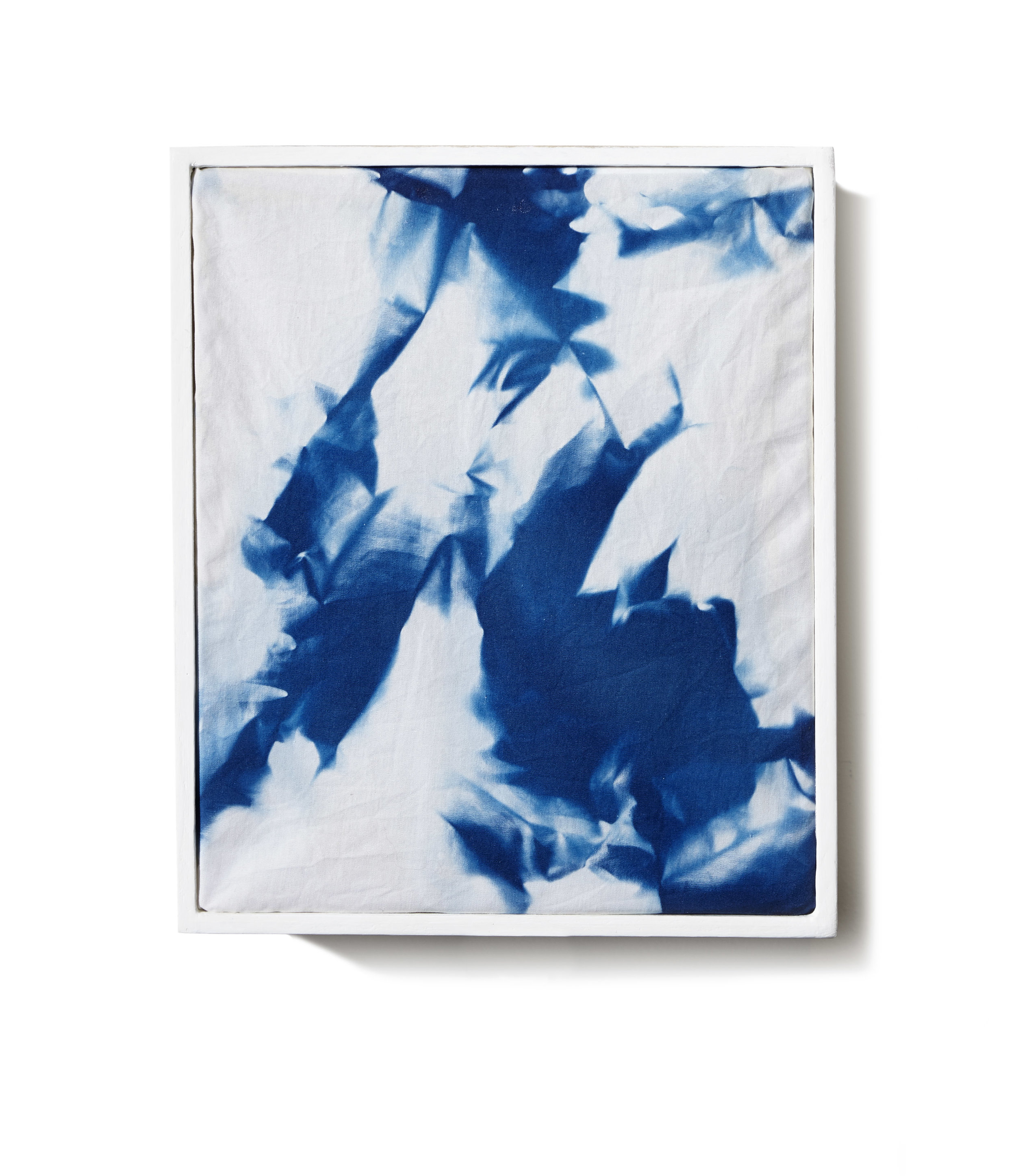
Omnipresence: Seasons in Times of Climate change
Omnipresence is a meditation of the artist’s co-creation with nature in this time of climate change. Her large-scale cyanotypes preserved in resin feature trees through the altered seasons. She presents the disappearing seasons of autumn and spring as synonymous to death and birth and equally as precious by seducing the viewer with their delicate, myopic, porcelain-like impressions. Winter, as consistently extending its season, is depicted as a long and farsighted landscape, and seeing the forest for the trees. Summer encounters violent storms that cause many young trees to fall before their time. Here, the artist prints the dying tree’s leaves to immortalize their present state.
Perry-Herrera also investigates the balance of oxygen and carbon dioxide interexchange between humans and trees. Since trees provide us our oxygen rich air, that ultimately sustains human life, the artist links that fundamental and symbiotic connection back to our origin of consciousness. In collaboration with sound artist, Kotorbay, carefully curated recordings permeate the gallery space via small abstract pieces that are seen, and heard, to breathe. The abstract artworks were created during the artist’s meditation sittings in the sun.
“The synchronicity of our breath connects us to our consciousness. Our collective consciousness is inherently connected to all life on this planet. In this consciousness, we awaken to a new reality. One in which we realize that we are contaminating our air, water, and soil. It is changing who we are and what we are. In this anthropocene, a new nature is born. One that is both organic and synthetic. Both conscious and mechanical. “
Through process, performance, ritual, visual art and sound, the exhibition is intended to be an immersive interdisciplinary experience that attempts empathic action toward positive environmental change.


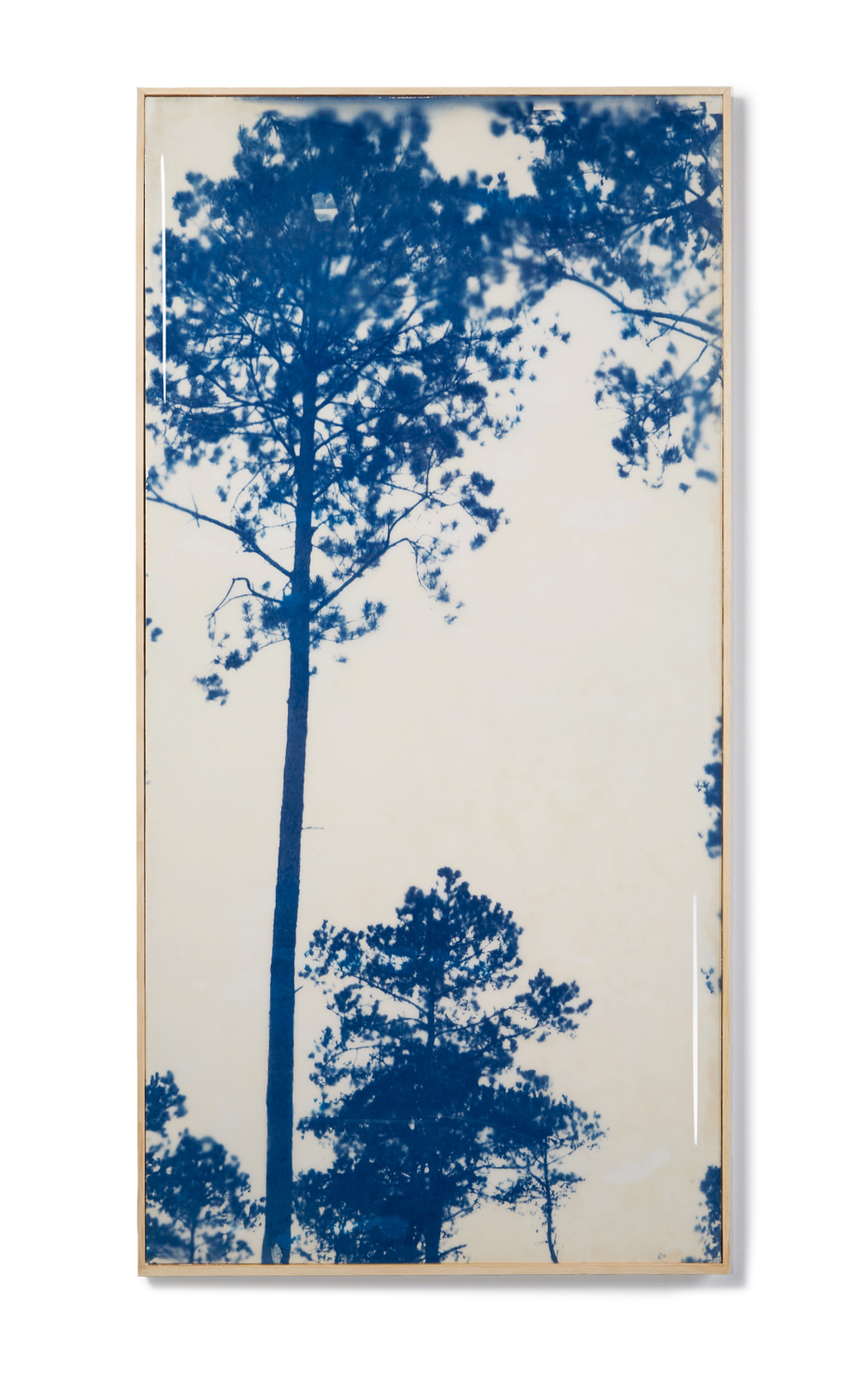



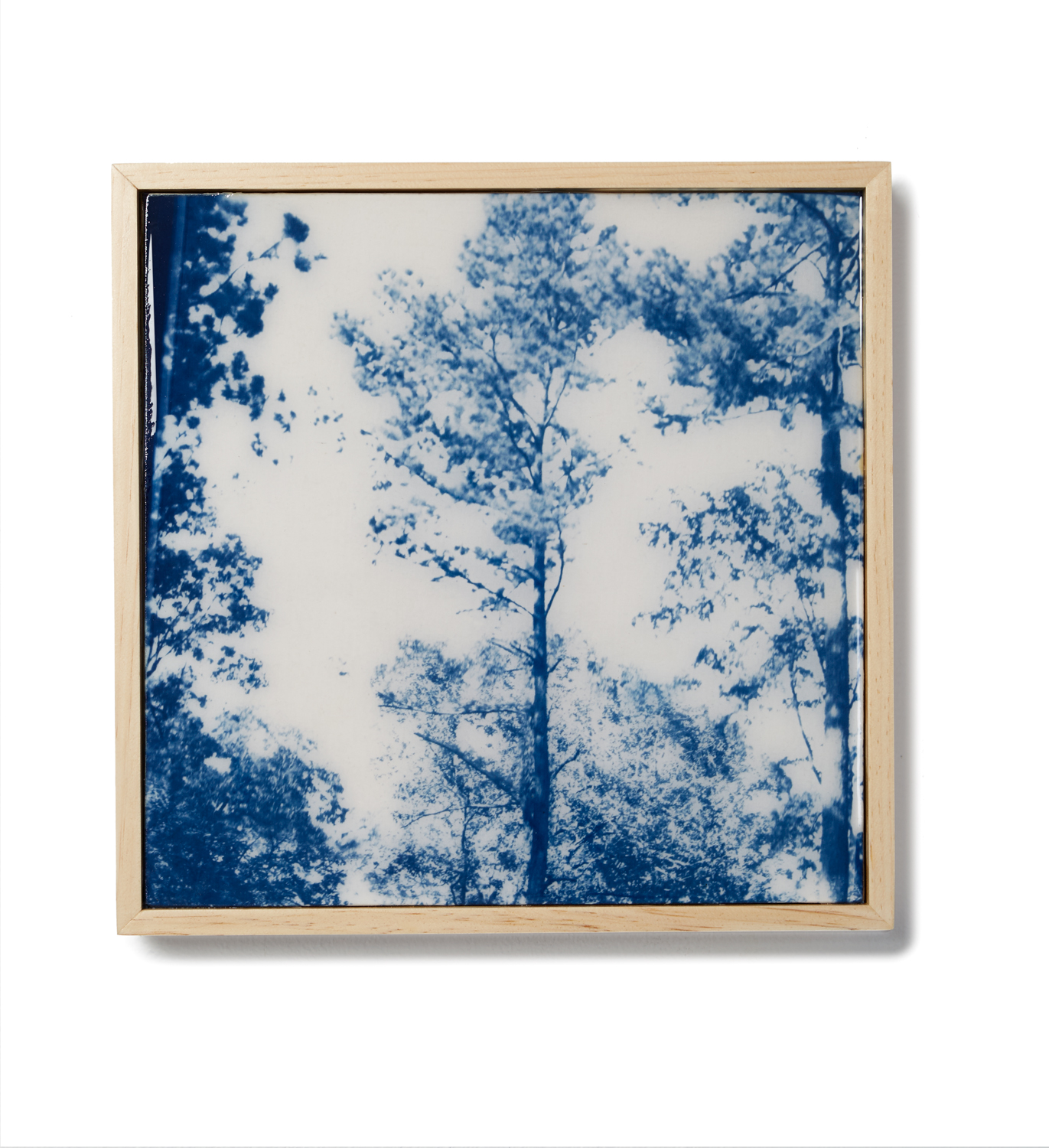
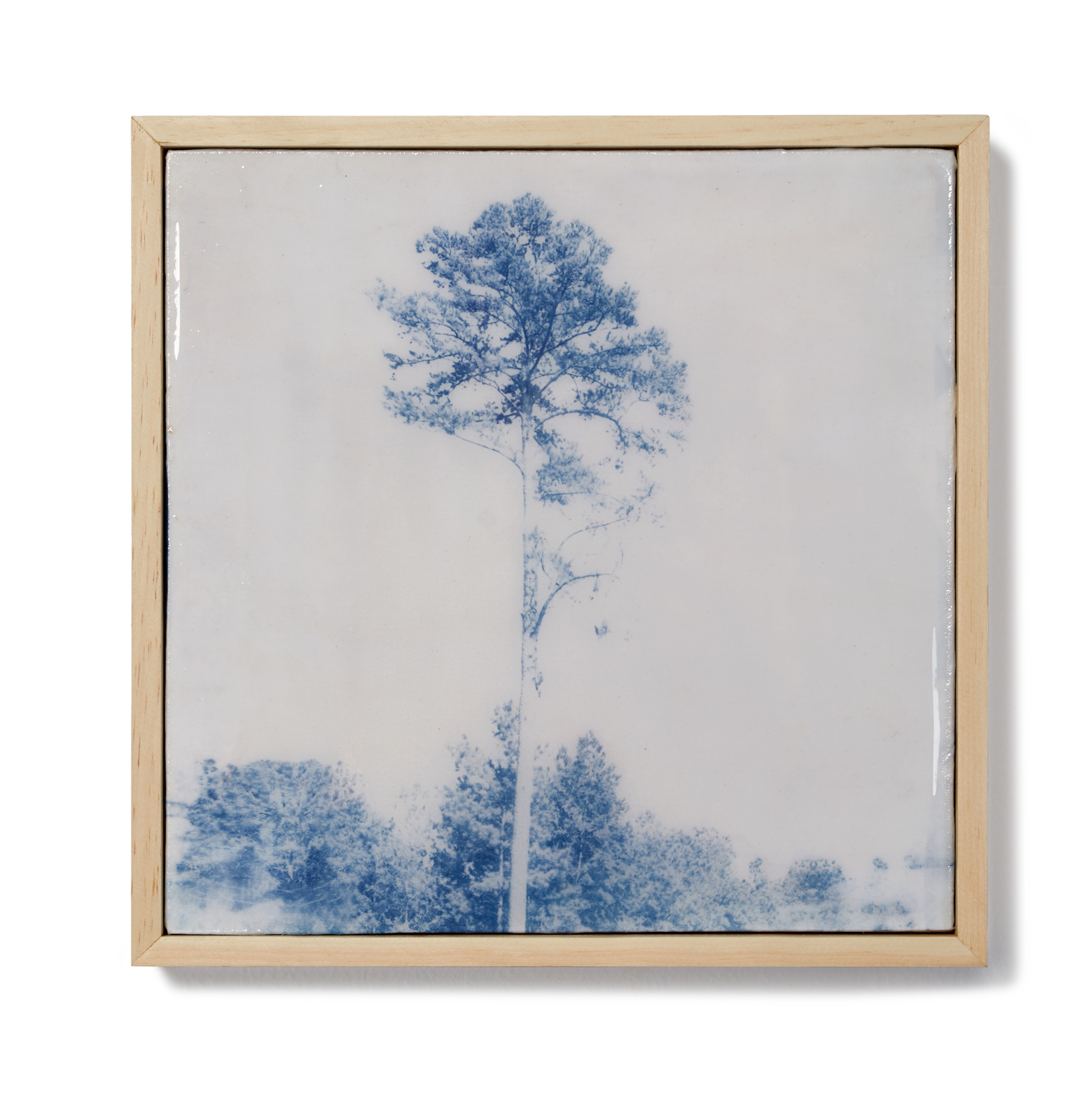

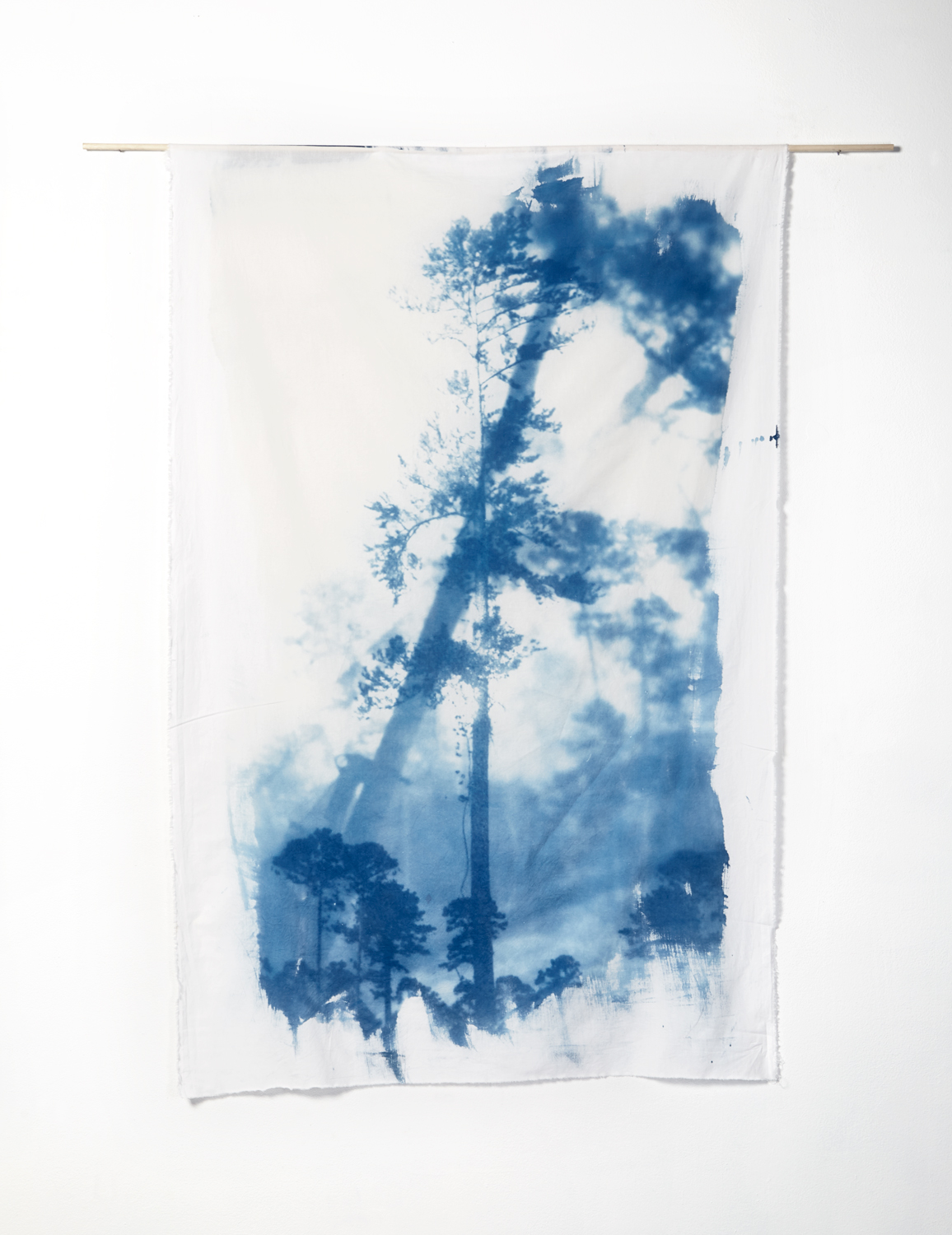

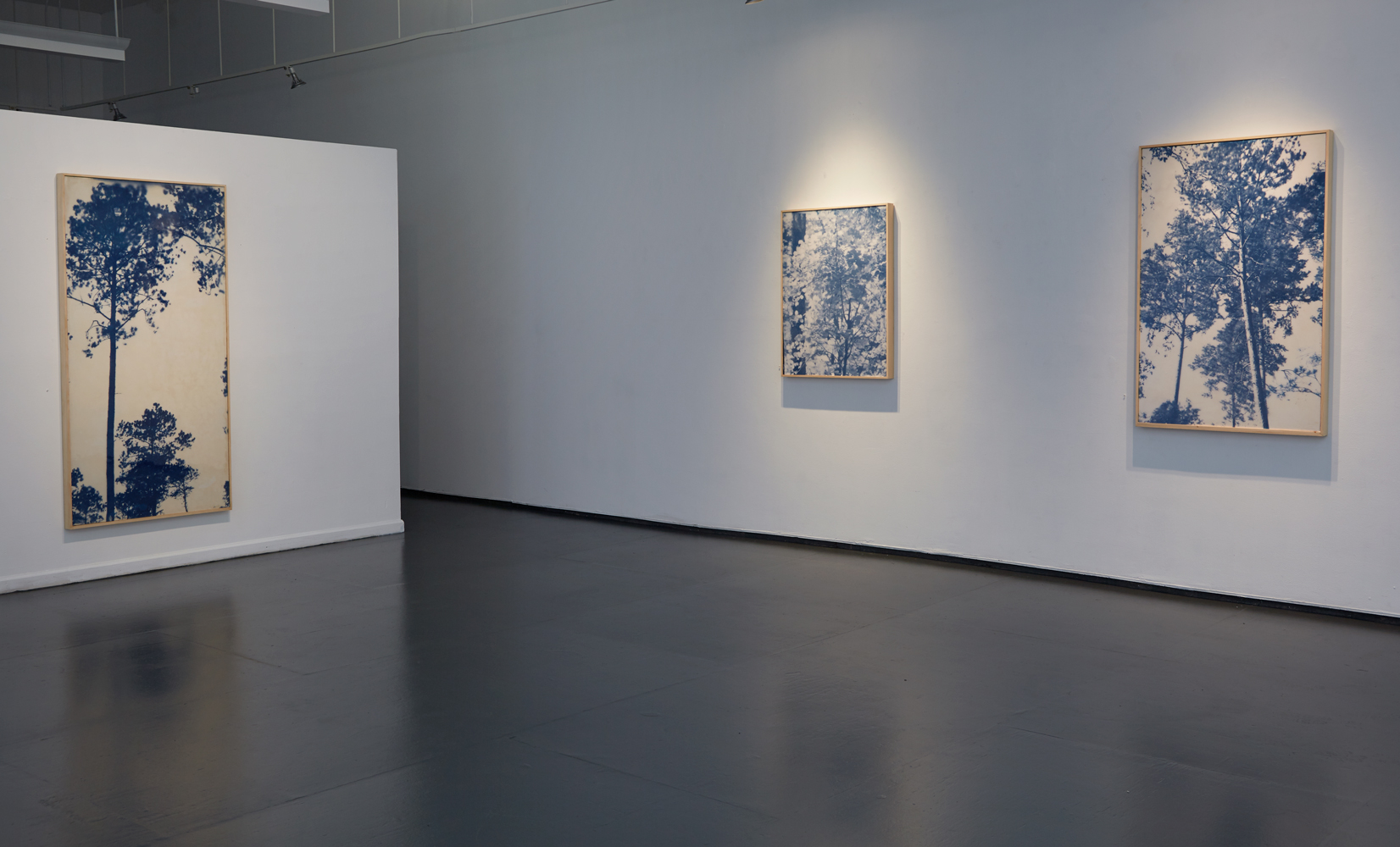
The Felling series
The artwork prompts contemplation on a world where trees exist only as memories, a consequence of the depletion caused by both natural and man-made disasters. The artist employs cyanotype, an antiquated photographic process, as a medium that relies on the sun's light to reproduce images collected from past timber-felling research. This method not only ties the artwork to the natural elements but also adds an additional layer of significance to the representation of trees.
The cyanotype images, created through a process dependent on sunlight, become symbolic of the trees themselves. As a nod to their preciousness and the urgency of preservation, the artist encapsulates these images in resin. This preservation technique not only ensures the longevity of the visual representations but also metaphorically underscores the fragility of the natural world in the face of environmental challenges.
The use of obsolete photographic processes, natural elements, and resin preservation collectively invites viewers to reflect on the impermanence of nature, the impact of human actions, and the urgent need for environmental conservation. The artwork serves as a visual narrative that encourages a deeper connection with the environment and sparks contemplation on the potential future of our ecosystems.
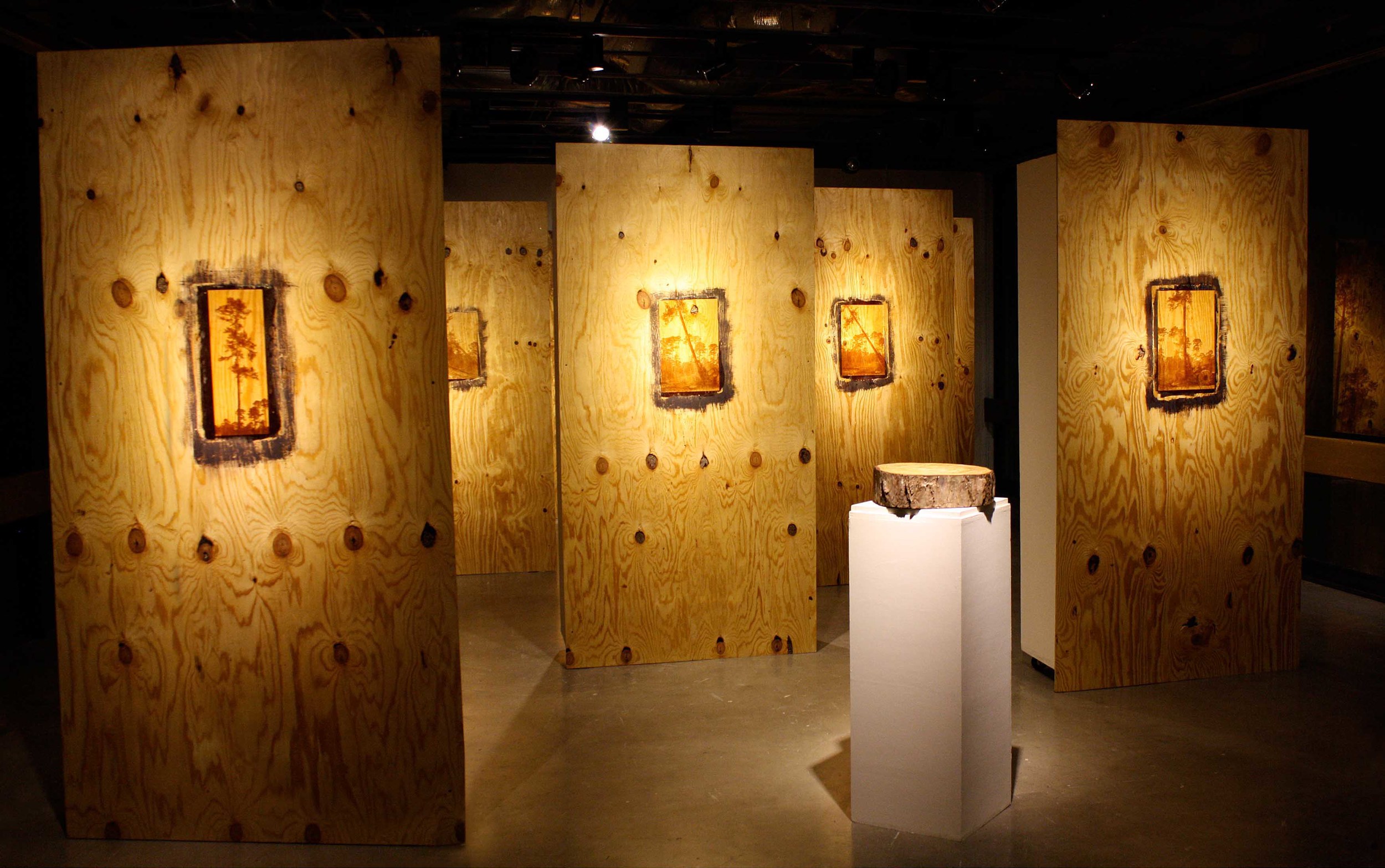
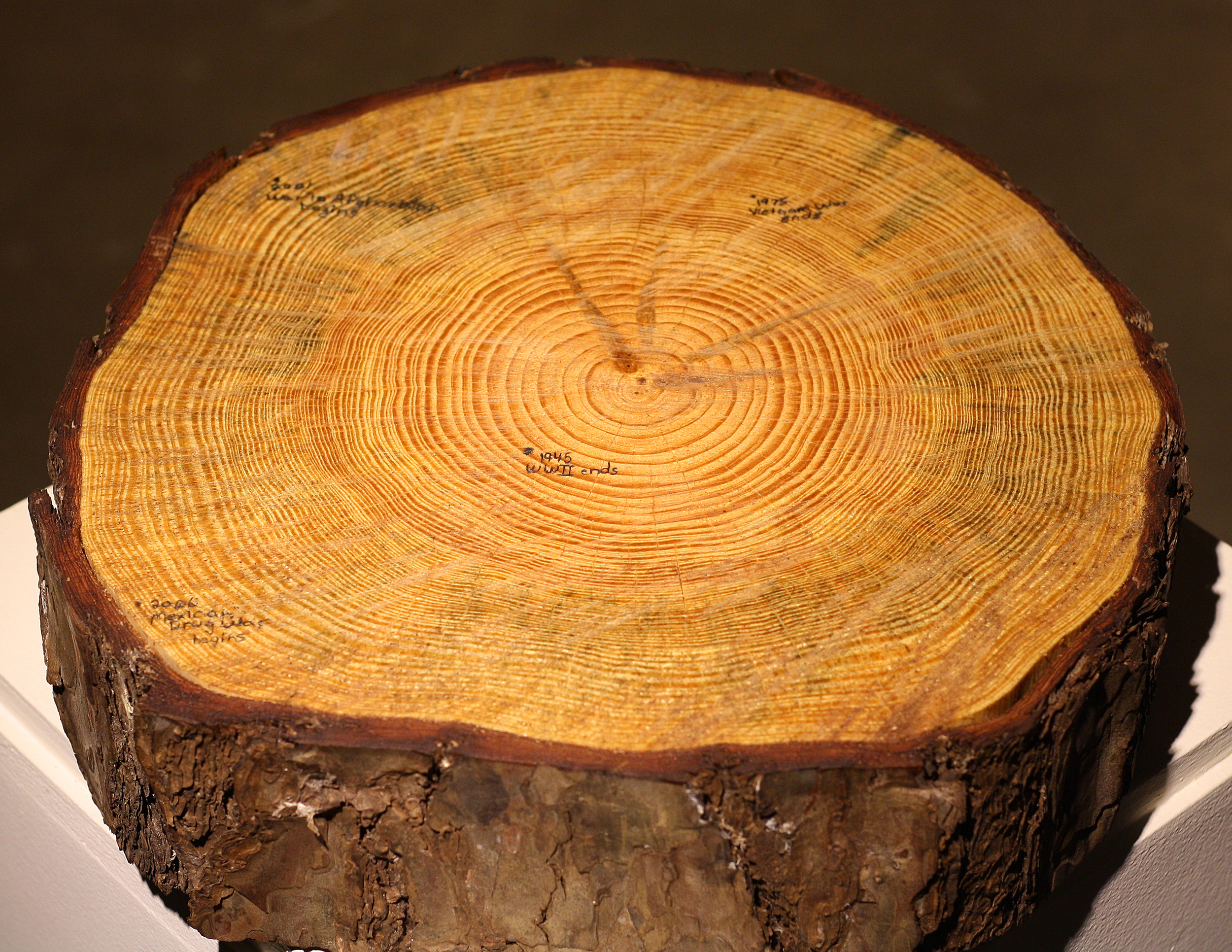
Memory of Trees (Plywood Forest)
The plywood panels used in this installation bear printed images of trees, and notably, these panels were directly sourced from the very logging site where the trees originally stood. The installation prominently includes an image capturing the tree in the felling process. This deliberate choice serves as a poignant commentary on the pressing issue of deforestation, positioning the image as a symbolic "memory" of the trees that once thrived in that location.
By utilizing the same material that was harvested from the logging site, the installation creates a tangible connection between the artwork and the environmental impact it addresses. The image of a tree during the felling process becomes a visual and conceptual representation of the challenges posed by deforestation. It prompts viewers to confront the consequences of human activities on natural ecosystems and fosters a deeper understanding of the interconnectedness between art, materials, and environmental concerns.
In essence, this installation acts as both a testament to the lost trees and a call to action, urging individuals to reflect on the environmental consequences of resource extraction while contemplating the memory and impact left behind by the felling of these trees.
Blurring the Borders
The art installation comprises three transparent black-and-white photographs, each delicately suspended from the ceiling. Capturing distinct perspectives of the El Paso-Juarez border between the United States and Mexico, these images converge to offer a multi-dimensional exploration of the complex region. Employing a clever use of back-lighting, the photographs seamlessly merge into a singular, cohesive image when illuminated.
The suspended photographs, hovering in space, create an immersive experience for the viewer. The interplay of light and shadow adds depth and nuance to the depiction of the border, transforming the installation into a dynamic visual narrative. This intentional fusion of images not only serves as a technical and artistic achievement but also metaphorically reflects the interconnectedness and fluidity inherent in border regions.
The installation invites contemplation on the multifaceted nature of borders, encouraging viewers to perceive them not as rigid divisions but as evolving, interconnected spaces with diverse perspectives.
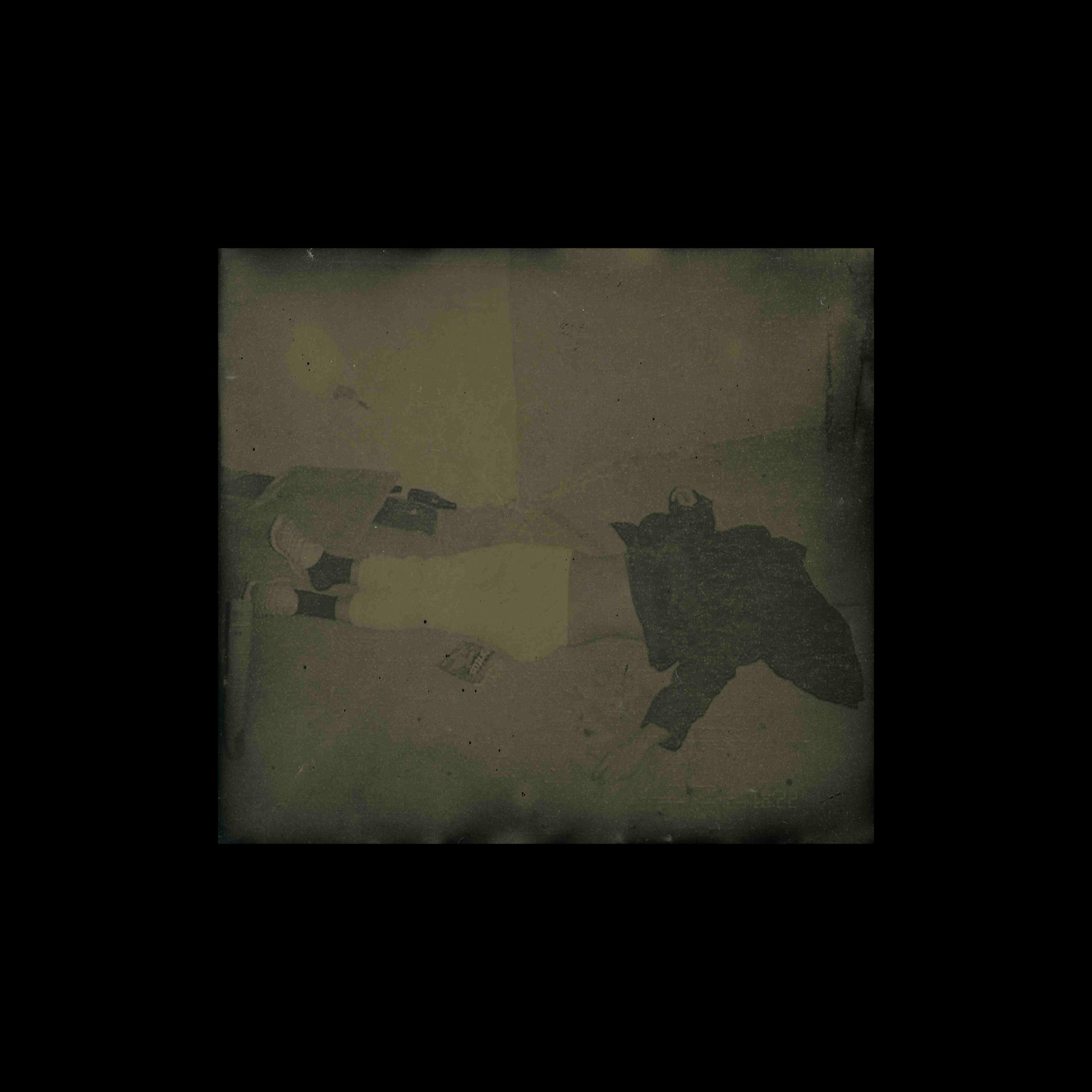
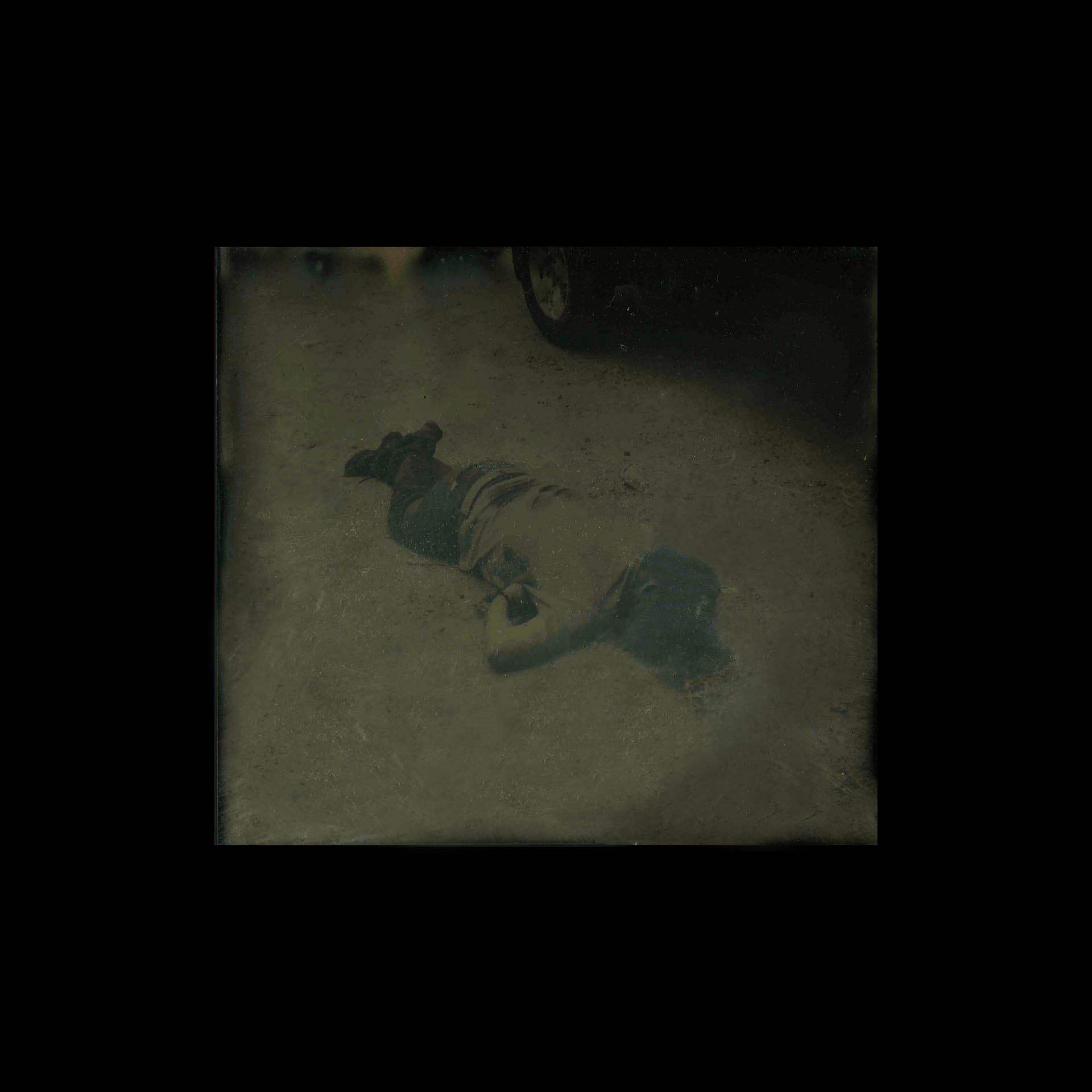
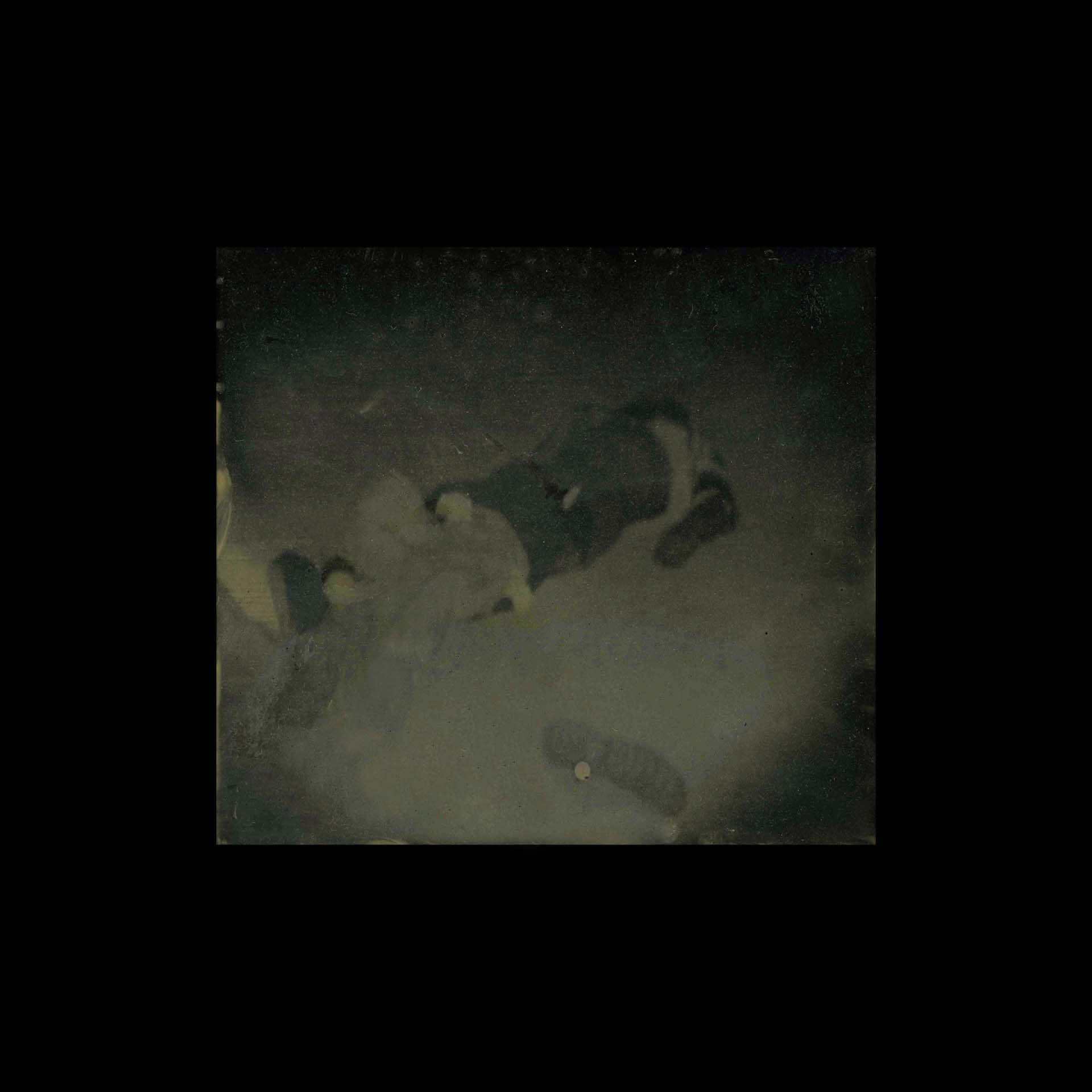
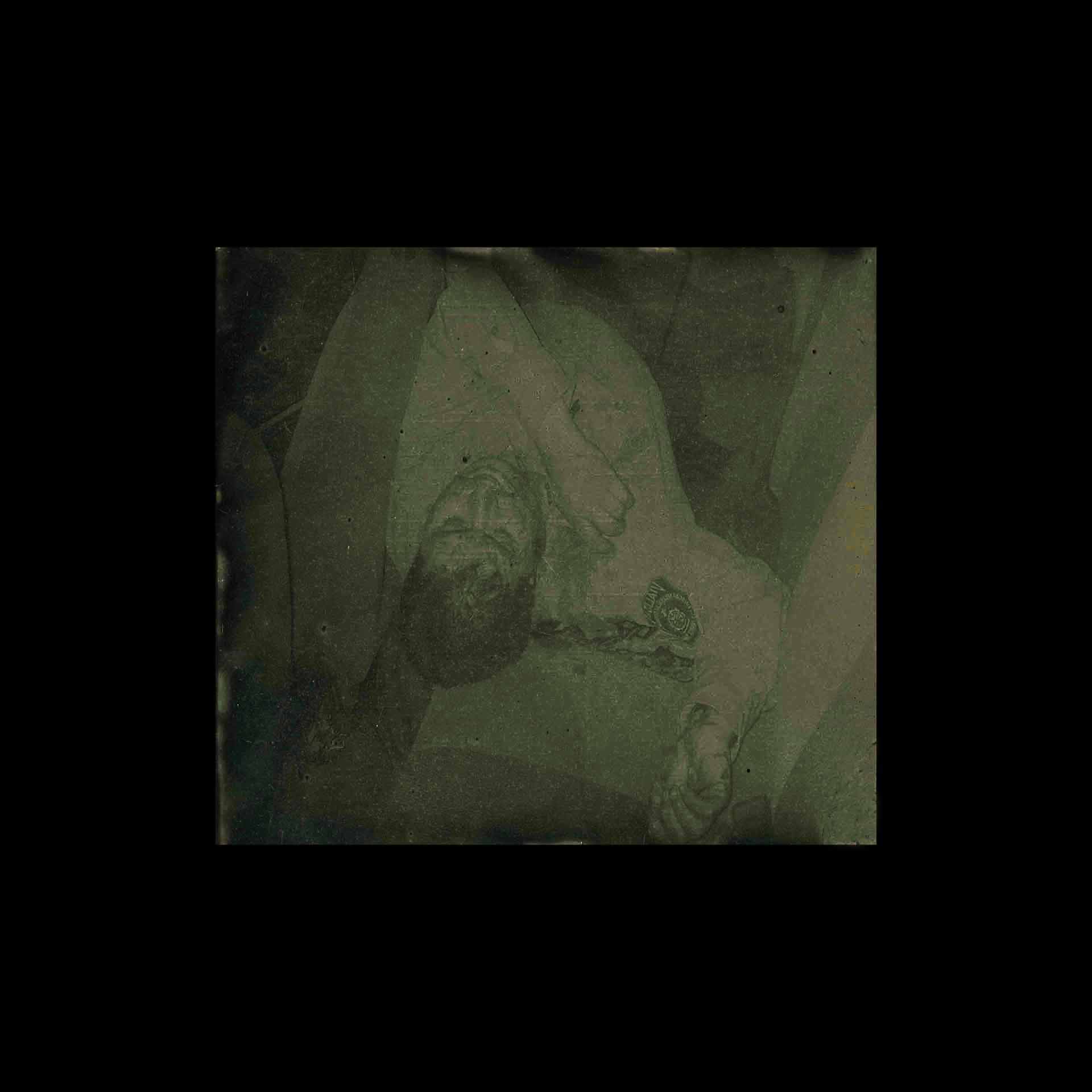
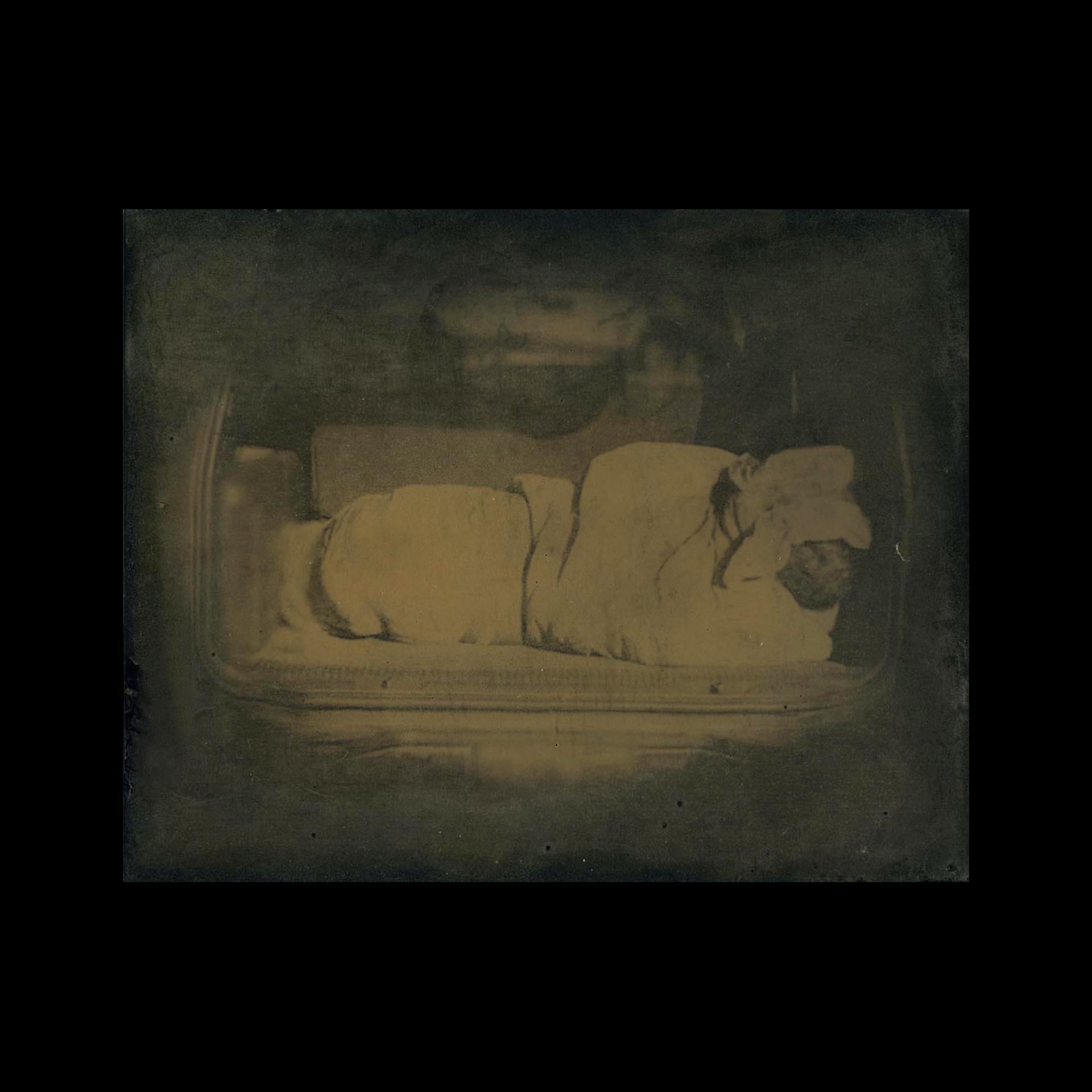
Postmortem Juarez
The artist's series features obscure photographs of real crime scenes in Juarez, Mexico, mirroring the aesthetic of antique Civil War postmortem photography. These evocative images not only document recent events in contemporary Juarez but also serve as a poignant homage to the victims whose stories were highlighted in yesterday's news.
By intentionally adopting the visual style of historical postmortem photography, the artist creates a powerful intersection between the past and present, drawing attention to the enduring nature of violence and its impact on communities. The series becomes a form of documentation, capturing the stark reality of the crimes that have occurred.
Through this unique approach, the artist prompts viewers to confront the harsh realities faced by individuals in Juarez, fostering empathy and understanding. The deliberate connection to historical photography techniques adds a layer of symbolism, inviting contemplation on the cyclical nature of violence and the enduring significance of acknowledging and remembering the victims.
Sleeping in the Sun
The sleep series is a collection of photograms created through a unique and performative process. The artist took a 20-minute nap in sunlight on a piece of fabric coated with cyanotype, capturing the movements of her body during sleep. Each piece within the series represents a specific day, resulting in a visual record of the artist's sleep patterns over a seven-day period.
This artistic endeavor goes beyond traditional approaches to image creation by integrating the artist's bodily movements during the act of sleep. The use of cyanotype, a light-sensitive photographic printing process, adds a distinctive visual quality to the images. The performative aspect of the creation process further enriches the series, turning it into a dynamic exploration of the intersection between art and personal experience.
The sleep series invites viewers to consider the artistic potential inherent in the everyday act of sleeping, transforming a seemingly mundane activity into a visually compelling and thought-provoking collection. The intentional use of sunlight, cyanotype, and the performative act of napping collectively contribute to the creation of a unique and engaging visual narrative.
Specimens
This series is born out of the contemplation of the molecular realm, drawing inspiration from the microscopic examination of viruses, bacteria, and genetic cell formations. Seeking to emulate the perspective of observing specimens through a microscope, the paintings within this collection are meticulously compressed between large-scale pieces of glass.
The artistic process not only captures the intricate details of molecular structures but also transforms the viewing experience into a kind of artistic microscopy. By compressing the paintings between glass, the artist recreates the sense of peering into the microscopic world, offering viewers a unique and immersive encounter with the intricate beauty found at the molecular level.
In essence, this series becomes a visual exploration of the unseen, inviting viewers to appreciate the aesthetic nuances inherent in the molecular gaze. The choice of scale and medium adds a dimension of tangibility to the microscopic subject matter, allowing the audience to engage with the artworks as if observing the delicate dance of life at a molecular level through the lens of a powerful microscope.


